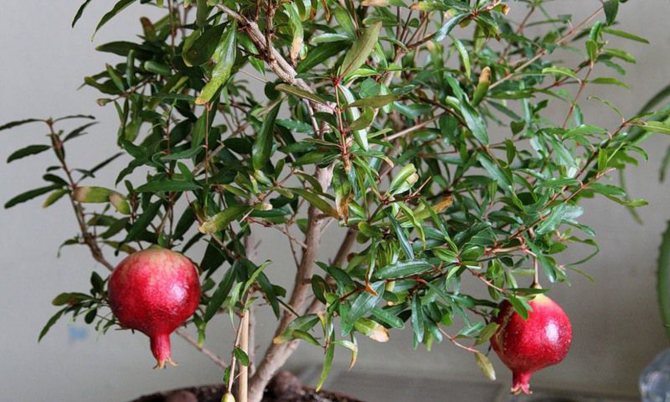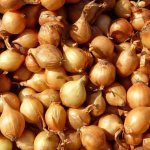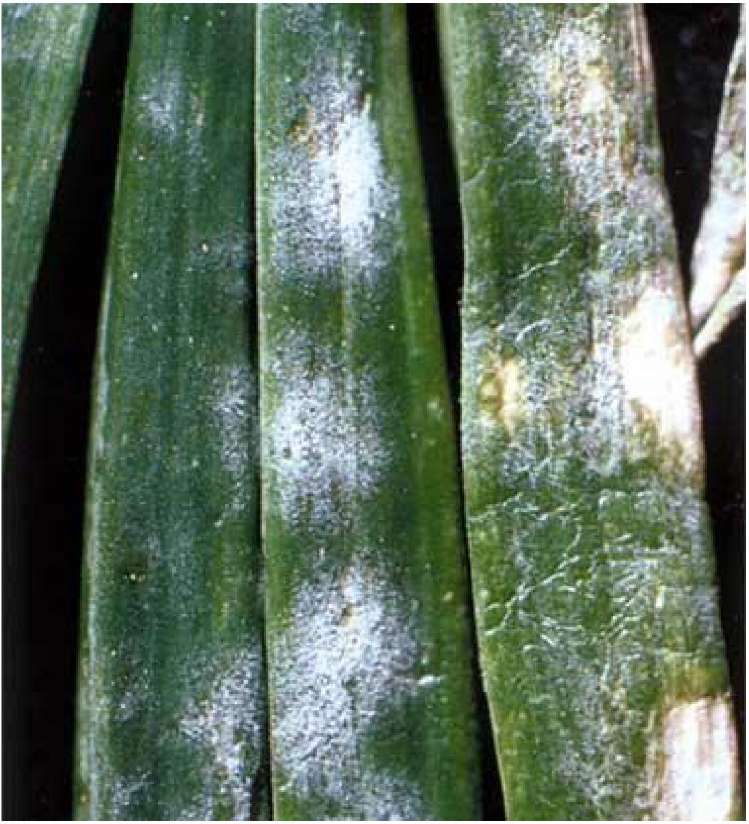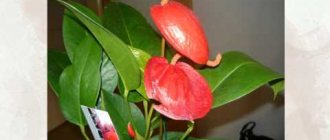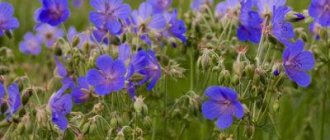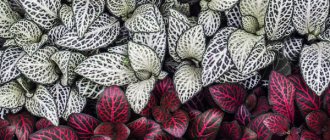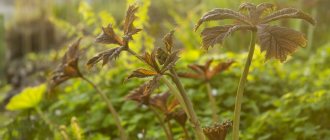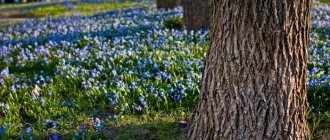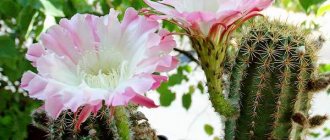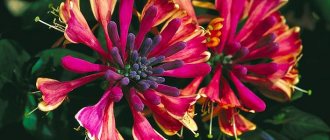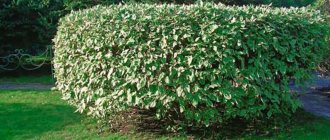I am glad to welcome you to my blog! In the spring I especially want vitamins. That is why this article will focus on perennial onions, whose abundant greens begin to delight us from April-May.
The onion family has about 600 varieties and more than 200 grow here.
Most gardeners grow this vegetable not only for turnips, but also for greens. With fine feathers, wide, long, sweet and bitter. It is very convenient to grow perennial varieties for this purpose.
It is not difficult to grow it in the country if you follow the recommendations.
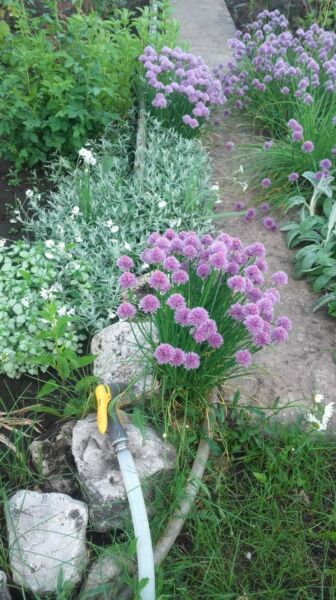
Characteristic
Perennials are very frost-hardy... These plants can withstand temperatures as low as 40 degrees below zero. These plants are not susceptible to disease and are very resistant to various pests. Moreover, the crop can give a good harvest in 3-5 years even under conditions of repeated cutting.
The plant forms a false bulb. Under favorable weather and climatic conditions, this bulb constantly produces leaves. The dormant time of this plant is quite short, therefore crops can be grown indoors or on protected soil.
In an open area, a plot that is isolated from the main crop rotation is perfect for perennial onions (in the photo you can see where the crop grows). This can be used approximately 5-6 years old.
It is very important to protect it from flooding after the snow melts in the spring and during the rains in the autumn. Onion roots are stringy, lie at a depth of about 20-30 cm.
This means that the soil on the site should be highly fertile, slightly acidic or, in extreme cases, neutral, with a pH of no more than 6-7 units and have a light composition. Root weeds and rhizome weeds will greatly interfere with growth and should be removed. If horsetail or horse sorrel grows on the site, then liming will need to be carried out before planting onions.
How to grow
This onion can reproduce both vegetatively and by seeds. On a small area, the first method is usually used. With this method, the harvest can be obtained already in the same year. Seeds are used much less frequently because plants planted in this way develop much more slowly. During the summer, only 5-6 very small leaves are formed on each bush.
With any method of planting, organic and mineral fertilizers must be introduced into the garden bed. Perennial onion seeds of this variety are planted in rows, the distance between which should be about 35 centimeters. They are buried in the soil by 2 cm. You can take seeds only from two- and three-year-old plants.
Caring for scented onions is very simple. The garden bed should be weeded periodically. After each cut, the soil is spilled with mullein solution. The bulbs of this culture do not have a dormant period, and they can be transplanted almost at any time.
Perennial onions: growing on the site and care
Soil preparation is the same as under bulb onions... In the fall, compost, manure or humus are introduced for digging up the soil. The amount of fertilizer is calculated at 10 kg per 1 square meter.
Potassium-phosphorus fertilizers are also used. In the spring, nutrient nitrogen mixtures are added under the rake. Perennial onions can be propagated in small pieces and can be sown.
The seeds of perennial cereal crops are small (especially chickpea stands out for this) and are characterized by low germination. Fresh seeds are recommended for planting. If they lie for a long time, then their germination rate may be below 80%. If this happens, then it is recommended to increase the seeding rate. Before adding seeds to the soil, they are subjected to a decontamination process.
Activities for the cultivation of perennial onions are generally not accompanied by special difficulties. The seeds are placed on beds, flat surfaces or ridges. The choice of location may depend on the type of soil. Ridges and ridges are used in cold lands or lowlands. Sowing in open soil begins in late April - early May. It is important to mulch it with peat or humus. It is desirable to maintain the ratio of 0.5 kg per square meter of soil. In the spring and summer, cuttings and seedlings are planted. In the second year and in subsequent years, you need to regularly feed the crops. When early spring comes, then after cutting, 10 g per 1 square meter of nitrogen and potash mixtures, as well as 15 g of phosphorus mixtures, are also introduced.
In the first year of life, a plant is formed with one, maximum three branches. The next year, flower arrows will appear in the same amount, on which spherical inflorescences will appear. In the last weeks of April - early May the first begin to arise:
A little later they begin to rise slime and fragrant... In order to get a harvest in winter, it is necessary to select planting material for a three- or four-year period in the fall and dig it up. Plants are placed in boxes, sprinkled with earth or peat. Before planting, they should be stored at 0 to 2 degrees above zero.
There are many varieties of perennial onions. In this article, we will talk about just a few of them. And the first on the list we will have chives.
This variety is also called a skillet or chisel.
Schnitt is used mainly for decorative purposes. Many gardeners grow it on their plots or boxes.
Most often, the life cycle of this onion is no more than 5 years. This plant reproduces well.:
They form an overgrown sod with their shoots. The bulbs are small.
Important! They are not eaten!
Slightly rough, narrow and fisty feathers are appreciated in this plant. Their width is no more than 7 mm, and their height is no more than 40 cm. Onion greens will remain tender over time and do not coarse, but such properties are preserved under the conditions of timely pruning.
The flowers of the chives are spherical. Their shades are very diverse in the red spectrum - from pink to purple. Flowering does not affect the quality of the life cycle. This period falls on May-August.
This is a very unpretentious plant. It successfully takes root even in the northern regions. Moreover, the culture needs abundant watering. Some gardeners plant it on their plots only for greenery, while others use this plant to naturally decorate their plot.
Islets of chives are impressively accentuated by curbs, and they also look great on alpine slides. For decorating alpine slides, it is recommended to plant chives from the southern and eastern sides.
Chives varieties
Its varieties are selected based on the climatic characteristics of the growing area: Bohemia and Crocus bear fruit well. They thrive in areas with warm winters.
are characterized by resistance to frost.
Preparing for winter time
In preparation for winter, this plant is almost cut off at the root. It can also be transplanted into any suitable vessel for 60 days. In winter, the seedling will begin to produce fresh greens. Bow Schnitt, as soon as the snow melts, begins to appear one of the very first.The first leaves of the plant in early spring are very soft, and by the beginning of summer they coarsen and become tough. Before flowering, they become bitter and pungent and are practically not eaten.
This type is known as one of the gourmet ones. Shallot is prized for its delicate herbal aroma and leaves with a sweet taste.
The bulbs of this plant, albeit infrequently, are also eaten. This onion is very popular in France - both as an ornamental plant and in cooking.
Greens are prized in shallots, for her and grow this onion.
Shallots have a lot in common with onions. However, it is more branched, and the bulbs are oblong and small, forming nests. When digging them up, it is easy enough to separate them. With the next plantings, they multiply very efficiently. Their ability to quickly update makes it possible to grow this onion on an industrial scale.
Features of the view
Shallots, which differ from a number of other perennial onions, are a discerning plant. It requires a special plot for itself, otherwise problems begin with its cultivation.
Shallots are not used for cultivation for decorative purposes. Neighborhood with one-year-old onions can cause the shallot to degenerate and, as a result, to lose its taste. The most common varieties in our country are:
- Sprint,
- Siberian yellow,
- Banana,
- A friendly family,
- Delicacy.
The main part of the varieties of this shallot is suitable for planting in the middle lane of our region. It also tolerates cold well, and its bulbs remain viable even at significantly low temperatures. Therefore, it can often be seen often in vegetable gardens in Siberia and the Far East. The bulbs are dug up for the next planting, usually at the end of the summer months. To get juicy greens, it is advised to carry out as soon as the snow melts. For the successful ripening of the bulbs, sowing is carried out after the first snow falls, in the autumn.
This perennial onion is considered one of the most common types. It is grown in almost every vegetable garden.
This species also has the name "Tatar" and "fisty". Usually, the batun is planted on an individual garden bed. The plant takes root well near flower crops. This species has a very branched bush - very succulent, with netted, long leaves. They reach a height of 60 cm.
The taste qualities of the batun are in no way inferior to flat onions, but they are the undoubted leader in terms of the amount of nutrients. Batun is rich:
- ascorbic acid
- potassium salts
- riboflavin and many others. dr.
The culture is excellently propagated by seeds, which are obtained annually after the end of its flowering period. A plant in one area can be grown for six years, however, provided that it is properly watered and regular soil fertilization measures are taken.
The most common varieties of this species:
It has a second name - drooping bow... It appears immediately after the snow melts. At the beginning of April, its greens can already be eaten.
Slime onion is one of the earliest species, and the leader in terms of iron content. It has a sharp, full-bodied taste that lasts all season.
This onion grows as a short bush. Its leaves are pale green, very juicy. They recover quickly after being cut. The slime blooms in large and single balls. However, his yield is not very high. The life cycle is 4 years. After this time, he is transplanted and well fed. Propagated by seeds.
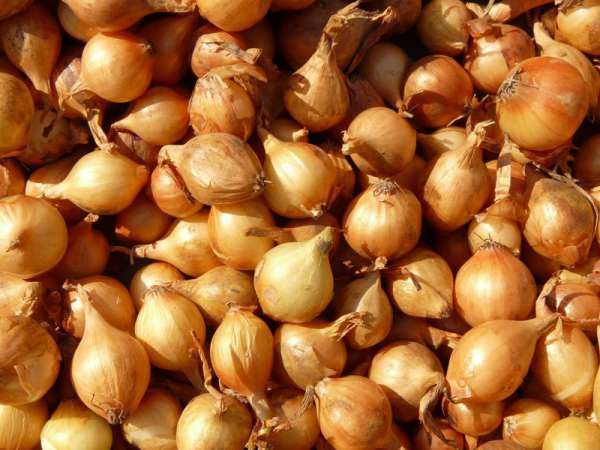

Annual varieties of onions
Onions (lat.Allium cepa) are a perennial plant used by culinary experts around the world. It is added to all kinds of dishes, consumed both raw and cooked, used as a medicine.Consider annual varieties of onions with photos and descriptions, which are grown "for a turnip."
Krasnodar yellow onion
The bulb is yellowish-pink, large, 100-200 grams. Recommended for annual cultivation.
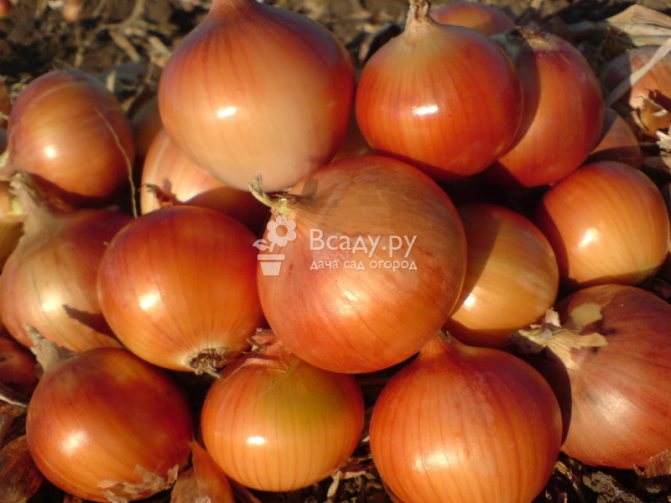

Onion variety Krasnodar
Productivity from 2 to 4 kg per sq. m. It quickly deteriorates, does not tolerate physical damage, is not transportable.
The taste of the Krasnodar onion is weak, the aroma is bright. It is used in conservation and cooking.
Onions Yurzhek
The surface scales are yellow with a straw tint up to 70-90 grams. An early maturing variety with good frost resistance, can be used for pre-winter planting. It is grown from seeds as an annual crop, and from seedlings as a two-year crop.


Early ripe annual onion - Yurzhek variety
Onion Yurzhek is high-yielding 2.5-3 kg per sq. m., has excellent keeping quality.
It has a sweetish taste and is used in cooking. More often refers to salad varieties.
Chalcedony onions
The husk is brown, with a bronze tint. Large annual cultivar with 80-130 grams of bulbs. For cultivation, it is recommended to choose a sunny, dry and open place. Resistant to cold, germinates at temperatures of 5 degrees Celsius with pre-winter planting.


Chalcedony onions are valued for their high yield
It stands out for its high yield - up to 8 kg per sq. m. It has high keeping rates.
It is mainly used in industrial preservation, and is suitable for the preparation of savory dishes.
Karatalsky
The color of the bulb is golden yellow. Late-ripening variety with large fruits. It is grown only in an annual culture from seeds. It does not tolerate frost well, therefore it is planted in the beds only at a stable air temperature of 15-20 degrees Celsius.
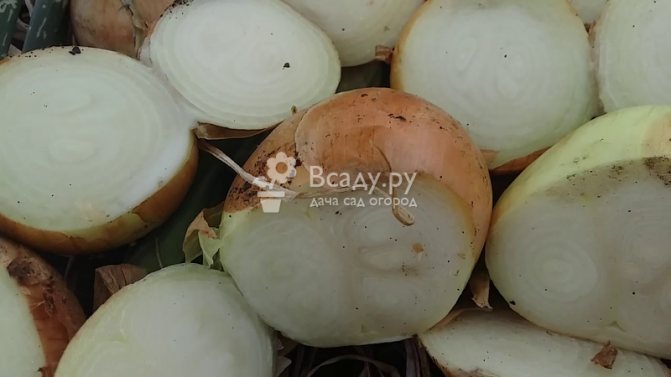

Karatal onion
The yield reaches 3-4 kg per sq. m., the bulbs are dense, weighing up to 120 grams. Stored up to 8 months, but poorly transported.
The taste is semi-sharp, it is used in salads and dishes without heat treatment, in the preparation of hot dishes, in conservation.
Early ripening bow Guess
The color is yellow, a brown or purple tint may appear. Strong onion, medium size, 30-90 gr. The variety is grown by seed or seedling method.


Onion Guess is appreciated by lovers of spicy preservation
Bright aroma and sharpness of taste make this variety indispensable for lovers of spicy preservation. The average yield is 1.8 kg, with the creation of favorable conditions for cultivation, up to 3 kg per square meter can be harvested. m. Sort Dogadka has excellent keeping quality and is well transported.
To get the maximum yield when growing onions, you must follow the watering rules.
Varieties for greens
The breeders have made sure that during the summer hardworking gardeners are supplied with onions (Allium) and breed species and varieties that fit their purpose. Their names are familiar to many lovers of fresh herbs: Parade, Totem, Slime, Skoroda, Leek, Batun and others. Each of them has its own characteristics, has features that you need to know when growing.
Onion Parade is designed to obtain quality feathers from seeds and Dutch breeders have created this green miracle. Allium has a number of advantages:
- does not form a bulb;
- is characterized by rapid growth;
- greens remain tender and juicy for a long time;
- does not have a sharp taste;
- not afraid of frost;
- feather is large, grows up to 60 cm in height.
The Parade onion is ready for feathers in 70-80 days (growing season). You can cut off delicate leaves as they grow, and repeatedly: up to 4 times. The cut feathers grow and produce juicy greens. They are maximally saturated with useful substances, vitamins, essential oils, when they reach 25-50 cm in height.
In the second year of life, Parade releases a flower arrow and gives seeds.They have time to fully mature only in the southern regions, where they can be collected and planted for the next season. In the middle lane, you will not be able to get seeds on your own.
The yield is 4 kg / sq. m. Moreover, during the season, you can plant onions in 2-3 doses with an interval of 2-3 weeks. This will create a "green conveyor" and then fresh herbs will be on the table throughout the summer.
If winters have little snow, then it is important for Parade to preserve the root system. The ground is covered with sawdust, peat, straw, so that the perennial crop forms a powerful clump for the next year.
This variety of green onions also works as a "green conveyor", allowing you to get a full harvest of greens from spring to autumn. It has improved characteristics of the traditional and beloved by many varieties of Batun.
Sourced in Japan, Totem has excellent recommendations:
- quickly gaining green mass;
- has a pleasant taste with a slight pungency;
- forms long feathers.
It is used by farmers, getting almost a year-round harvest for sale. Suitable for growing in greenhouses, it can be planted before winter. Many options for obtaining allow you to feast on greens from early spring to late autumn.
Onion Totem is distinguished by powerful leaves of a rich dark green color, covered with a waxy bloom. It grows up to 0.5 m in height and forms large bushes. The tips of the leaves practically do not turn yellow. It is cultivated in a continental climate, as it is resistant to temperature extremes. It is resistant to most diseases.
Seeds of hybrids were obtained from crossing Totem with local varieties of Batun. This is a good option, since the hybrid is adapted to the local climate and is characterized by low shooting.
In the fields of Eastern and Western Siberia, Slizun freely grows in the wild. But it is not so widespread and is loved by gardeners, therefore it is a "rare guest" on personal plots. This is a shame, since the species is healing, capable of removing toxins and lowering cholesterol levels.


Vegetables grown in their own beds are much healthier than purchased ones. At any summer cottage, you can find a plant such as an onion. Many gardeners are thinking about planting onions, choosing between biennial and perennial varieties. This article will discuss the popular varieties of perennial onions and the secrets of growing them from experienced gardeners.
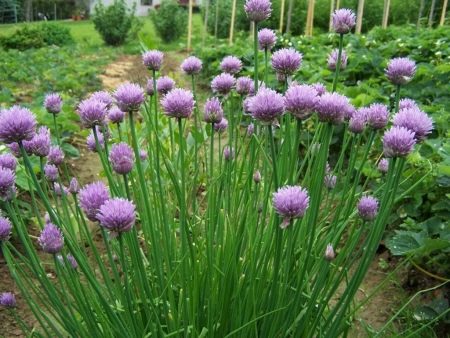

How to grow perennial onions for greens in winter
All of the varieties described above are excellent for forcing during the cold season. Perennial onion feathers contain a lot of vitamins. In this regard, as well as in taste, they surpass even onions. They are planted with sods. That is, they dig out a bush and divide it into several parts, leaving as much land as possible. There should be about 30 onion bulbs in the sod of chives, while other perennials have 3-5. The leaves, if they have not yet withered, are cut off. Sod prepared in this way is stored in a cool place until November – December. At this time, they are transferred to prepared containers. Pots for forcing perennial onions should have a height of at least 15 cm. Light nutrient soil is poured onto their bottom with a layer of 10-12 cm. Then the sods themselves are installed and lightly sprinkled on top.
As soon as sprouts appear on the surface, the pot of onions is transferred to the windowsill. Watering the plants too often is unnecessary. Perennial onions are fed, the cultivation of which on the windowsill is a simple procedure, several times during the winter with a weak solution of urea (1 g per 1 liter of water). This allows for a bountiful harvest.
As you can see, this culture is very unpretentious in care - perennial onions. Even a completely inexperienced gardener will probably be able to grow it in summer or even winter. After all, all that is required to obtain a good harvest of this useful plant is to irrigate, feed and loosen on time.
Features of the
Perennial onions are loved by all gardeners.It has not only excellent nutritional and medicinal properties, but also looks beautiful in summer cottages.
The most important advantage of such a bow is its lifespan. With proper care, perennials grow in one bed for up to 6 years. They also do not require a transfer from one place to another.
A perennial vegetable has excellent frost resistance. It is able to withstand cold temperatures down to -40 C. This allows the varieties to easily survive winters in different parts of the country.
A separate advantage is its care. Basically, the bushes need good watering, fertilization and periodic loosening of the soil. With sufficient care, perennials are not exposed to pests and diseases.
It is convenient to propagate perennial onions if desired. This can be done using seeds that develop in the flower stalk of the plant, or by dividing an adult bush.
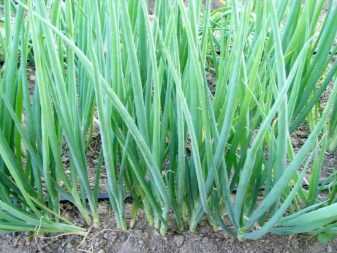

Perennial onions are replete with a variety of vitamins and amino acids. They have a positive effect on metabolism and strengthen the immune system. Also, onions contain phytoncides - volatile substances that kill disease-causing bacteria.
The onion crop is one of the first to emerge. Simple agricultural technology allows you to get large volumes of fresh green leaves from April, May.
With its description, a perennial vegetable is almost similar to an annual, but there are still differences. Collecting it at your dacha is not difficult at all if you follow all our recommendations.
As the name suggests, this variety has the ability to bear fruit for more than one year. The winter road is mainly bushy, flat and fragrant. The Chinese version has the most pronounced garlic aroma.
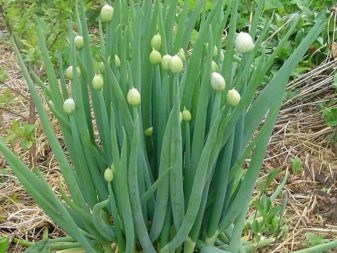

There is a wide variety of perennial onions on the market. The most interesting of them will be described below.
Batun is the most famous type of onion among perennials. It can be found in almost every vegetable garden. There are several varieties of this onion. Their main differences are in branching, frost resistance, ripening rate.
The onion has a branched bush with large, long, dark green leaves. The height of the bush can be up to 60 cm. It propagates by planting seeds or vegetatively. The tramp is sown in late autumn, early spring or late summer.
For reproduction in the second way, the rhizome is divided into parts by several plants, the roots are shortened to 4 cm and the leaves are cut to 8 cm.
It is important to note that the growth point does not fall asleep during planting. Plants can be planted in this way in early spring or in September, October.
To taste, this perennial is slightly sharper than onion. Feathers are used for food, it has no heads. In terms of the amount of nutrients, this winter road is definitely the leader. It contains vitamin C, riboflavin and potassium salts.
Greenery will delight you with its beauty from spring to the end of the summer season. With good feeding and care, the batun grows on one bed for about 6 years. Most often they use such varieties as "Izumrud", "Molodets", "Totem", "Baikal".


Shallots are characterized by their sweetish leaves and mild aroma. For this, he is so appreciated by many gardeners. Bulbs are also eaten, but much less frequently.
Shallots are similar to regular onions, but outwardly they look more spreading, and medium-sized elongated bulbs form nests.
Shallot is somewhat capricious. It requires a special area; when adjacent to other plants, it can lose its taste and be reborn. However, it is easy enough to grow and propagate.
For reproduction, the bulbs are dug up in August, and planted in early spring or autumn. To obtain luscious greenery, plants should be planted after the snow has melted, and for the ripening of the bulbs - at the end of autumn.
Common varieties are Sprint, Delikates, Druzhnaya Semeyka, Siberian Yellow and Banana.


This winter road is perfect not only for ingestion, but also for decorating a summer cottage. Many gardeners plant it precisely for the sake of white, purple or pink inflorescences. Fluffy inflorescences fit beautifully into summer cottages and are in perfect harmony with other flowers.
Only delicate tubular feathers are used for food. They represent a whole piggy bank of vitamins - ascorbic acid, B3, B9 and many others. An important condition is the timely undercut of the leaves. It will help the feathers not become coarse and maintain tenderness.
In addition, this bow is well adapted to different environmental conditions. Schnitt can grow in both harsh cold climates and arid regions. However, abundant watering is the main condition for its development.
Before the beginning of winter, the plant should be cut almost to the root. If desired, it can be transplanted into a pot and left for a couple of months. In winter, it will also produce fresh greens. From early spring to flowering, chives will delight with their soft, delicate feathers. However, during the flowering period, the leaves acquire a sharpness and are practically not used in food.
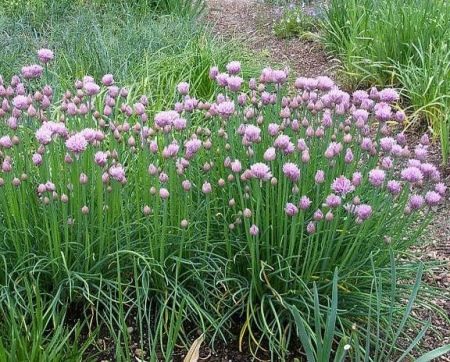

A fragrant winter road originally from China. Currently, among gardeners, it is only gaining its popularity.
Fragrant onions do not change their taste throughout the season. Its feathers are delicate, with a subtle taste of garlic. Bulbs are not eaten. They are covered with a protective layer that allows the scented onions to withstand cold winters.
Experienced gardeners do not recommend cutting the leaves completely. It is enough to cut off the extreme ones, and leave the core. During the period of release of arrows, the leaves become coarser.
In August, the fragrant winter road begins to bloom. Its white star-shaped flowers will be a wonderful decoration for an alpine slide.
Fragrant onions are the undisputed champion in the amount of vitamin C. Famous varieties are "Stargazer" and "Piquant".


Multi-tiered
Multi-tiered onions are one of the most frost-resistant varieties among perennials. It can grow in one bed for up to 7 years.
Otherwise, it is called Egyptian or walking. And this is no accident. He is the only viviparous bow. New onions ripen above the ground, take root and release new leaves. Therefore, when it grows, you should get rid of extra heads in order to prevent overgrowing of the garden.
Layered onion greens are consumed throughout the season. Feathers have a pungent, spicy taste. Bulbs can also be used in cooking. New bushes can be grown from them.
To plant a multi-tiered onion, you will need a separate bed, and in a month it will delight you with fresh herbs. Popular varieties are "Odessa Winter", "Memory", "Likov".
Chives, chives or decorative bow
Delicate tubular feathers are great not only for ingestion, but also for decorating a summer cottage. Many gardeners plant it precisely for the sake of inflorescences (white, purple or pink).
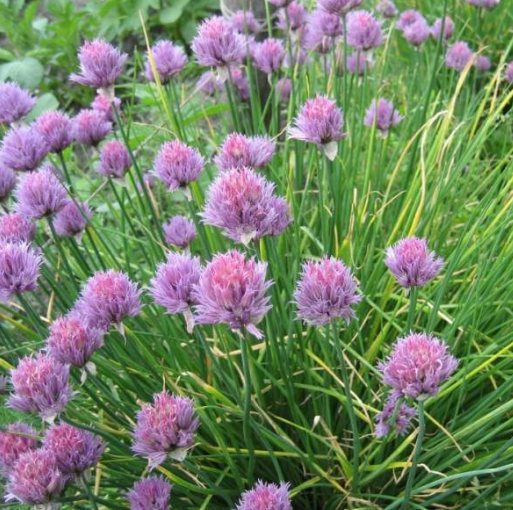

When talking about perennials, you can often hear the word Allium which means decorative bow.
It looks very nice together with carnations and bells.
They fit beautifully and harmonize perfectly with other flowers in summer cottages and represent a whole piggy bank of vitamins.


You need to cut off at the very base - this way more greenery is preserved in the garden and the growth of new leaves is stimulated.
If you eat only leaves, do not let the plant bloom. Although the flowers are also edible, the greens become less flavorful.
Propagated from seeds or by dividing the bush.
Which to choose?
When choosing a perennial onion, several factors should be taken into account: taste, care requirements and reproduction.
Most varieties have a delicate feather taste. An exception to this is the aromatic onion, the leaves of which give light notes of garlic. For lovers of the familiar onion, the variety is suitable. For lovers of sweet taste, shallots are suitable.
Care requirements are the same for many varieties.However, when planting, you must take into account the type of onion. Some perennials, such as batun, shallots, tiered onions, require their own beds and do not tolerate neighborhoods even with other varieties. Others, on the contrary, will become a wonderful decoration for a neighboring flower bed. Chives and aromatic onions will be beautiful additions to flowering plants.
All species reproduce both by dividing the bush and by seeds. Only a multi-tiered bow, which itself generates new bulbs, does not fit this rule. This factor is important for those who are going to plant a small bed of onions and expand it in the future.
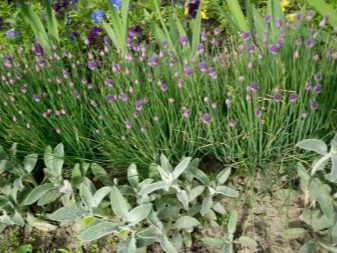

Jusai - sweet onion
Scented or winter road this species comes from China, it is only gaining its popularity among gardeners.


Its feathers are delicate, with a subtle aftertaste of garlic (they do not change their taste throughout the season).
We do not completely cut the leaves, we cut off the extreme ones (we leave the core). Leaves become coarser during the release of the arrows.
During the summer, the leaves are cut 3 times: when they reach a height of 20 cm and 2 times with a month's interval.
Fragrant begins to bloom in August and white flowers can be a wonderful decoration for an alpine slide.
It is convenient to propagate with the help of seeds that develop in the peduncle of the plant, or by dividing an adult bush.
Varieties "Zvezdogot" and "Piquant".
Breeding technology
Perennial onions can be bred in two ways - by seeds and by dividing the bushes. Each of these methods, its advantages and disadvantages, is worth mentioning separately.
Most onion varieties are recommended to be planted in late fall or early spring. Seeds sown in the frozen soil are saturated with moisture and germinate within the specified time frame. With this cultivation, the harvest from young onions can be obtained 2 weeks earlier than with spring sowing.
But spring planting also has its merits. The soil is looser after winter, which means that the roots will develop better. Therefore, when planting in spring, more seeds emerge, and the bed is less overgrown with weeds. It is important to note that onion seeds require a well-cultivated, fertilized soil. A sufficient amount of vitamins and minerals promotes better plant development.
When growing onions with seeds, planting time depends on the climate. The southern regions are characterized by a rapid departure of moisture from the soil. This means that it is best to sow the beds with perennial onions in early spring. If the snow does not go away until May, and frosts persist until June, then it is worth sowing onions in late autumn.
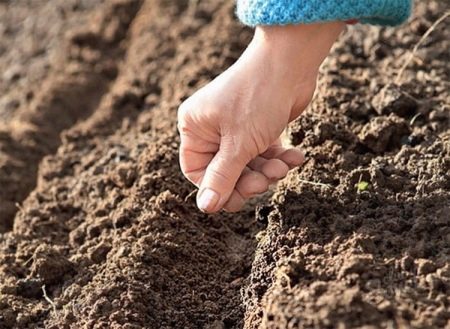

Almost all types of perennial onions can be grown by seed. The multi-tiered onion does not create seeds; it can be propagated by dividing the bushes. Otherwise, this type of reproduction is called vegetative. It is suitable for absolutely all types of perennial onions. The breeding principle is very simple. In the first months of spring or in August, an adult onion bush is divided into independent parts. It is important that the divisible bush is more than three years old. The plant grows in three years, so it will not be difficult to propagate it.
The root of the bush must look strong and viable, or the onion will die. Well-developed parts of the bush are planted at a distance of 20-30 centimeters from each other and to a depth of about 10 centimeters.
If the branches are weaker, then they need to be planted shallowly - up to 6 centimeters. The distance between such bushes can be halved - up to 10-15 centimeters.
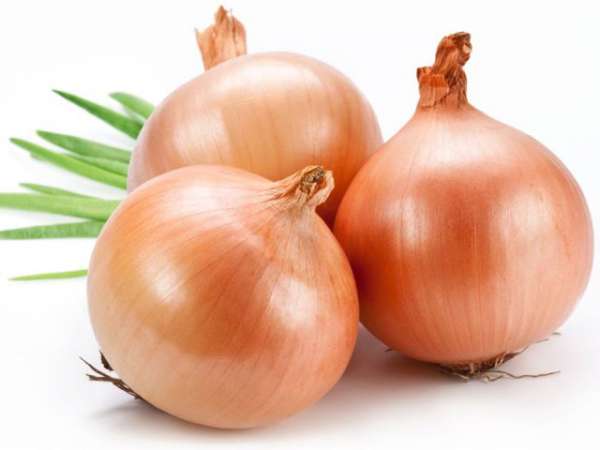

The onion family has about 600 varieties. More than 200 grow here. The number of varieties is increasing due to the domestication of wildly growing species. The owners of backyard and summer cottages grow perennial onion crops. Batun, chives, slime, shallots, fragrant, oblique, multi-tiered - these are the names of the most popular varieties of vegetables. With fine feathers, wide, long, sweet and bitter. Their early greens are softer than onion feathers. Differs in a high content of vitamins and minerals. Caring for these varieties is easier, since the sowing is carried out once every three to five years.It is worth considering the top 5 most popular bows.
Application and storage
Onions are used both raw in salads and in cooking. Greens are used as a seasoning in dried form, added to meat dishes, pies, side dishes. It improves palatability and saturates the body with vitamins and minerals.
Often, onions are recommended by traditional medicine as a prophylactic remedy for colds, exhaustion, and constant fatigue. In combination with aloe, radish, honey or dried apricots, onions are used to treat the upper and lower respiratory tract, fungal skin lesions.
Detailed information on the benefits of green and onions can be found in our material.
To prevent the bulbs from losing their properties during wintering, they must be properly stored. For these purposes, only ripe fruits are suitable without mechanical damage and putrefactive lesions.
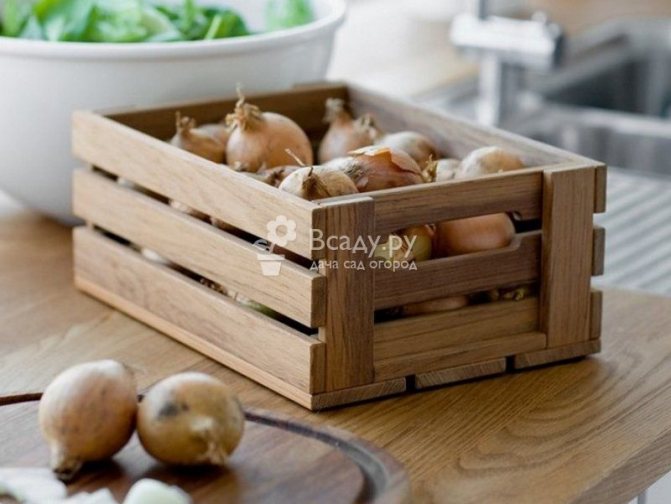

In order not to lose the harvest of onions, it is important to store them correctly.
Before storing in an air-permeable container, the crop should be thoroughly dried. During the winter, you need to periodically sort through stocks, removing rotten bulbs. To prevent germination, you can cauterize the root lobes or cover them with lime paste.
You will find information on the rules for storing onions in our article.
Variety of varieties of perennial onions that produce greens
Shallots (shrews) are similar to the onion breeding method. The tramp is grown for the sake of greenery. It grows in one place for 5-7 years. The chives are similar, but have some peculiarities. It is advisable to change the site every 2-3 years. A feature of a multi-tiered bow is the formation of air bulbs in 3-4 tiers. Slime (drooping) less sharp, useful for anemia.
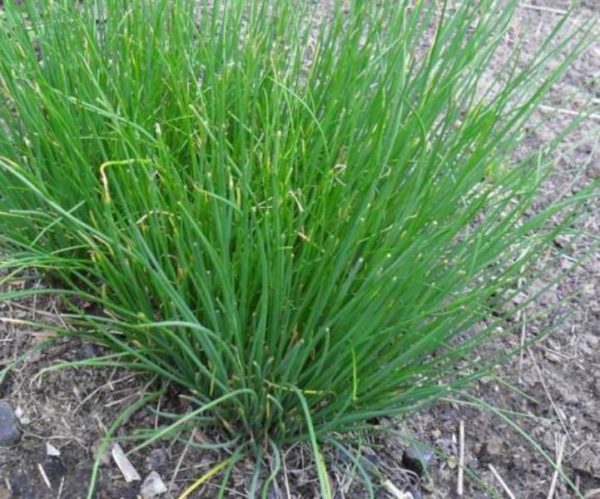

Perennial onions in the garden
Slime onion (drooping)
A perennial plant (leaf plates are flat, linear, similar to iris leaves), their length is up to 20-25 cm, width is 8-15 cm and are colored green (the shade can be light or dark). The false bulb is shortened (2-2.5 cm in diameter) and covered with light dry scales. The bush is spreading and branches throughout the growing season.
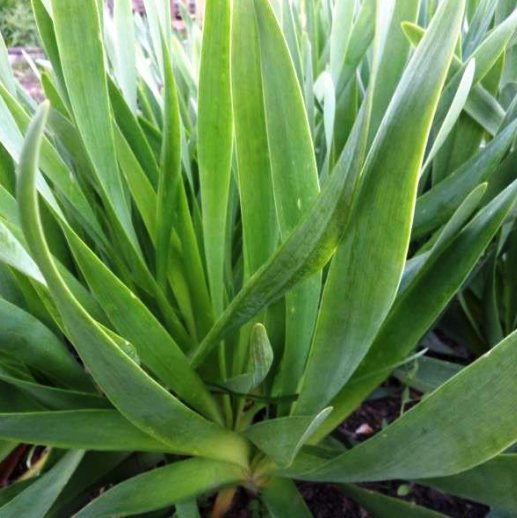

Slime (drooping) less sharp, useful for anemia.
It is recommended to renew the planting every 3-5 years. Along with other species, it has not yet become widespread.
Batun as a species of perennial
The onion is the most common among perennials. It has large, dark green leaves. Outwardly, like onion, but the taste is more pungent. Only feathers are eaten, the heads are absent. There are several types of baton. Differences are manifested in branching, foliage, early maturity, frost resistance. In all varieties, feather growth begins as soon as the snow melts.
This species propagates by seeds and dividing the bush. Seeds are sown in late autumn, early spring, late summer. Podwinter and spring sowing yields a harvest at the end of July and August. In the summer - in the fall, several feathers appear, in the spring the leaves quickly give marketable products.
For vegetative propagation, plants are planted in the fall from mid-September to the second half of October or early spring. The rhizome is divided into parts of 2-3 plants, the roots are cut to 3-4 cm, the leaves are cut to 5-8 cm. When planting, do not cover the growing point with earth.
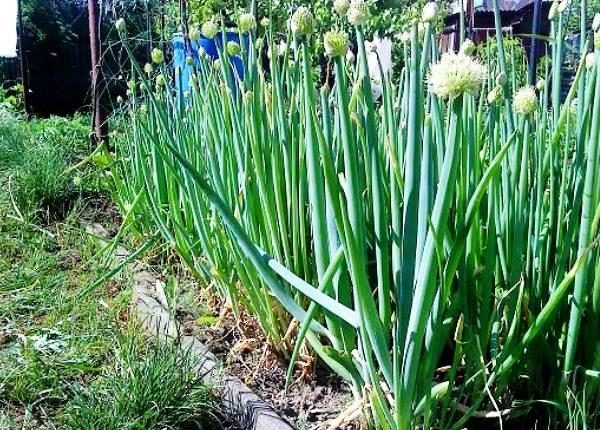

Batun onion in the garden
Onion
This variety has gained popularity in our country quite recently. The homeland of the batun is China. In this country, it is still found even in the wild. This perennial onion is very popular in Mongolia, Korea, Vietnam. In another way it is called "winter", "sandy", "fisty".
The best predecessors for this onion are tomatoes, potatoes, cabbage and cucumbers. Batun is usually planted on wet soils (without stagnant water). Before landing, the earth is dug onto the bayonet of a shovel.
This variety can grow in the same place for one, two or three years. In the first two cases, the spring onion is planted (as early as possible).With a three-year cultivation, the beds are sown from mid-summer to October.
Slime with wide flat feathers
Slime onion is a perennial plant that is resistant to frost. It has been growing on one site for more than five years. Feathers are flat, brittle. It differs from others in its delicate, mild taste. Greens do not lose their taste for a long time, they are eaten before shooting.
The root system is located at a depth of 20 centimeters. The plant loves moisture, grows well when watering the sown area. Undemanding to light. Grows in poorly lit areas.
Propagated by seeds and vegetatively. Planting, leaving, replanting are similar to the onion. Having sown seeds in July, the crop is harvested in the third week of April. Feathers are ready for use two to three weeks after the ground has thawed.
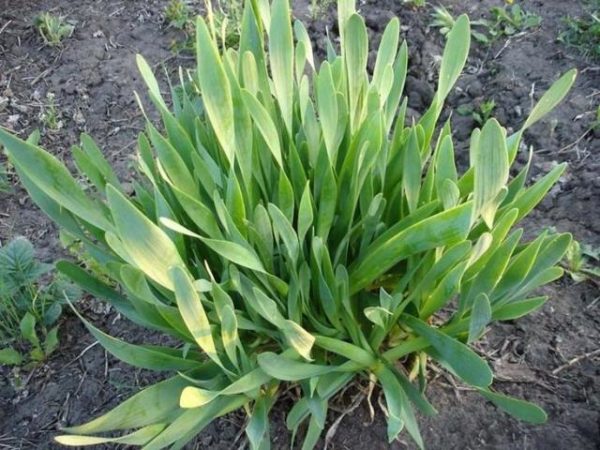

Slime onion
Chives bow
The main distinguishing feature of this variety is the very thin and not too long tubular leaves. In the second year after planting, chives begin to branch and give up to 50-100 shoots. Both the leaves of this plant and its juicy false bulbs are eaten. In our country, Altai or Siberian chives (perennial frost-resistant onions) are most often grown. The varieties Bohemia, Chemal and Medonos are among the most popular.
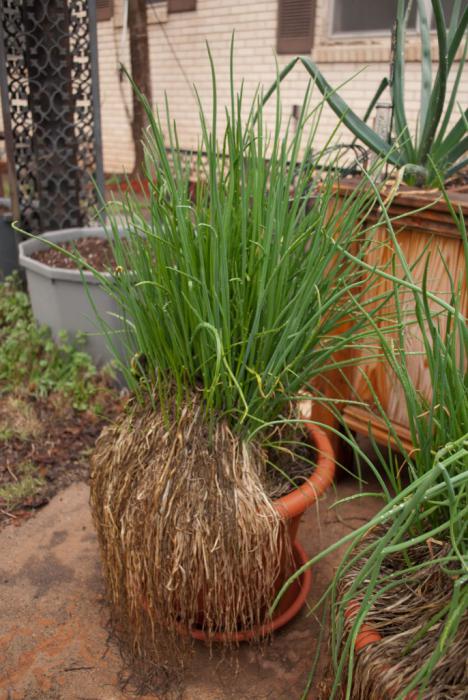

Multi-tiered
It is one of the most frost-resistant herbaceous plants.... On one site it grows up to seven years. They eat green mass, basal and large air bulbs, which are formed in 2-4 tiers instead of inflorescences. Due to the lack of a dormant period, disembarkation takes place all year round. Greens appear a month after planting in the ground.
Reproduction is carried out by dividing the uterine bulb or air bulbs. To obtain planting material, a mother site is required. An area of two square meters is enough to provide the required amount of air bulbs. To obtain larger bulbs, the multi-tiered species is grown from seedlings.
For forcing greens on the windowsill, air heads are used. After harvesting, they are dried, placed in a cool, dry place. So the bulbs will not dry out before planting. 20 days after planting, leaves up to half a meter in height will grow in the kitchen.


Layered onion close-up
Chives somewhat similar to a batun. Planting method, biological requirements. The external difference is determined by narrower, stronger leaves. The cut feathers do not crumble and remain in tufts. The presentation is better, almost no damage during transportation.
When grown on one site from three years, the yield decreases, the leaves become smaller, and a powerful sod is formed. Can be used to grow greens in winter. In the fall, rhizomes are dug up, stored in basements for at least a month, planted in pots with fertile soil. Placed in a warm place, watered. After three weeks, the leaves will grow back. One plant can be harvested three times.
This variety is also grown as an ornamental plant. They are planted in flower beds, around paths, to decorate lawns, used as a curb plant. A year later, flowering arrows with spherical umbrellas are formed. Their shades are from pink to purple. Blooming plants look like wonderful, colorful rugs.


Blooming onion chives at their summer cottage, growing along the path
Shallots are a type of onion. The bulbs are small, ripen two decades earlier than the turnip. The taste is not as pungent as onions. The greens are tender, erect, there are 3-4 times more feathers than that of a turnip. Grow more often for green mass. Bulbs are used less often due to the fact that they are small and consist of several cloves. Hence another name - shrike.
For planting, the heads are divided into teeth or planted as a whole. Then the bunch of greens will be larger. Seeds are sown less often. In the first year, small onions of 3 - 5 cloves are formed. On the second - large bulbs.Some of them form arrows, inflorescences and give seeds.
The shallot has a long dormant period. Before planting, the head must be cut to the shoulders. Warm up for 3 hours in hot water at a temperature of 45 degrees.
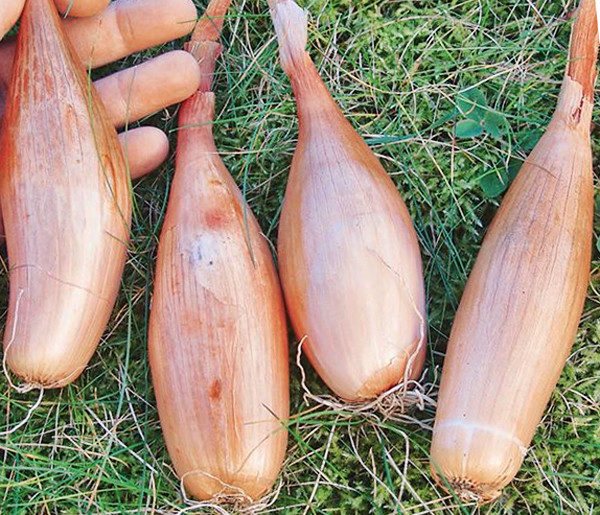

Freshly harvested shallots
Growing
Like most other varieties, slime onions prefer moist, neutral soils. It can be planted both in areas well-lit by the sun and in partial shade. It reproduces vegetatively or by seeds. In the first case, planting of perennial slime onions is carried out in early spring or at the end of July. The seeding depth is very small - about 1.5 cm. 70 cm is left between the rows, 20 cm between the plants. Cabbage, lettuce, parsley, and dill are considered the best predecessors for this culture.
This onion is fed in the same way as all other perennial varieties: in the spring and after cutting the leaves. The crop is harvested 3-4 times per season.
How to care for onion perennials?
Onion crops belong to the same family... To avoid damage by pests and diseases, they cannot be grown in the same area. The main care comes down to watering, loosening, weeding, fertilizing.
In good weather conditions, the onions are watered four times per season. In dry weather - every one and a half decades. After watering, the soil is loosened. The first deep loosening is carried out in the spring. This has a beneficial effect on the growth of roots and leaves. Along with watering, mineral fertilizers are applied. Weed as needed.
The value of perennial onions is due to the ability to grow green feathers, using forcing, during the entire off-season.
How to grow onion
To speed up germination, the seeds of this culture are usually soaked for 24 hours. During this time, they have time to swell well. When soaking, the water is changed 2-3 times. After swelling, the seeds are taken out of the saucer and dried.
Onions are planted in carefully prepared beds in two to six lines. The seeds are buried in the soil by 1-2 centimeters. The distance between rows and individual plants should be about 18-20 cm.
Caring for a batun onion consists in periodic watering and feeding. For the first time, the soil in the garden bed is fertilized in the spring before planting the seeds. In this case, mineral fertilizer is used. Further feeding is carried out after each feather cutting. In this case, a mullein diluted with water would be an excellent feeding option. Perennial onion-batun responds very well to ash solution. Watering the bushes too often is not necessary. The soil under this plant is usually moistened only with prolonged drought. The crust formed after the rain is broken with a rake.
The leaves of this onion can be used for food after they reach a height of 10-15 cm. Plants are cut at the very base, leaving two or three arrows on the seeds. After a while, the leaves grow back. During the season, you can get 2-3 harvests from the batun.


Culture properties
There are many varieties of green onions. They differ in taste, appearance, ripening period and cultivation characteristics. Each variety description has its own nuances that must be adhered to in order to get a good harvest. Because of their attractive appearance, onions are often grown as an ornamental plant. Gardeners value onions because of their early ripening ability.
The plant contains amino acids and vitamins that the human body needs. The main purpose of planting green onions is to get greens. Onions improve digestion, have a positive effect on metabolic processes and increase the protective properties of the immune system. The vegetable lowers cholesterol levels and removes toxins from the body.
Large varieties
Exibition
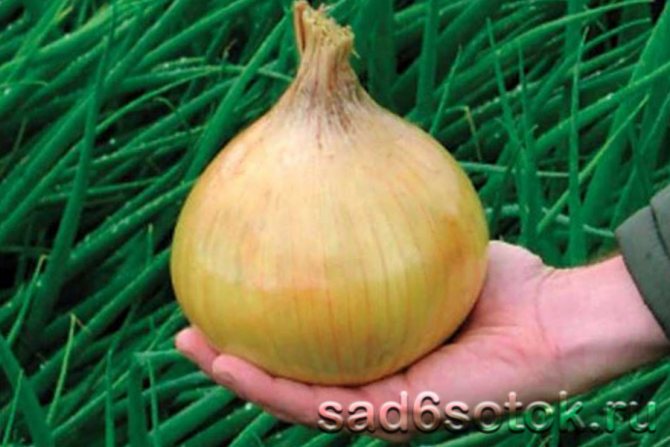

Bulb onion grade Exibishen
The light yellow bulb is round-elongated, heavy, can weigh half a kilogram, and sometimes 800 g. The taste is excellent, salad, sweet. They are grown by planting seedlings with a planting density of up to 20 pieces per 1 sq. m.The time from planting seedlings to harvesting is about 130 days.
Exibishen is very yielding, due to large heads in favorable conditions it is possible to collect up to 43 kg from 10 sq. m. On the site it ripens poorly, on average by 60%, requires long ripening, preservation is below average.
Globo
This late-ripening salad variety is characterized by a perfectly round shape and a mild sweet taste. It ripens in 120-130 days from the moment of planting. Very large, weighs 700-800 g, kilogram specimens are not uncommon. The inner scales are white, filled with tasty juice, the husk is yellowish-orange.
Globo amazes with the excellent yield of huge marketable bulbs, can yield up to 90-120 kg per 10 sq. m. The preservation is medium or low, tends to germinate in storage.
Russian size
The huge bow grows to a record weight of 3 kg. The shape is rounded, slightly elongated at the neck, the integumentary scales are golden yellow, slightly greenish. The pulp is creamy white, the taste is sweet, delicate with a slight piquant pungency, without a strong smell.
To obtain selected specimens, it is necessary to grow seedlings, with sowing seeds in pots in February. In this case, the harvest falls in August-September. Low preservation, more often used in salads and preparations.
The subtleties of growing winter varieties
Planting onions before winter has been practiced by gardeners for many years. It is important to choose the right variety. In cold winters with little snow, freezing of all plantations can occur. Care features:
- Mulching the beds with humus mixed with sand.
- For the winter, the plantings are covered with fallen leaves or spruce branches.
- In the spring, after the threat of frost has disappeared, the beds are cleaned and loosened.
Growing winter onion varieties is preferable in southern regions with a temperate climate and relatively warm winters.
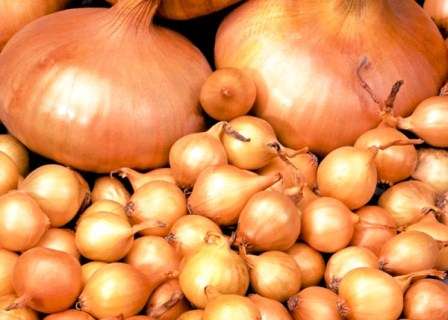

From the history of onions
The cultivation of onions took place about 4 thousand years ago in Asia. In Russia, they learned about this vegetable culture in the middle of the 12th century, since then almost no dish has been complete without onions. The vegetable has medicinal properties and is widely used in folk medicine.
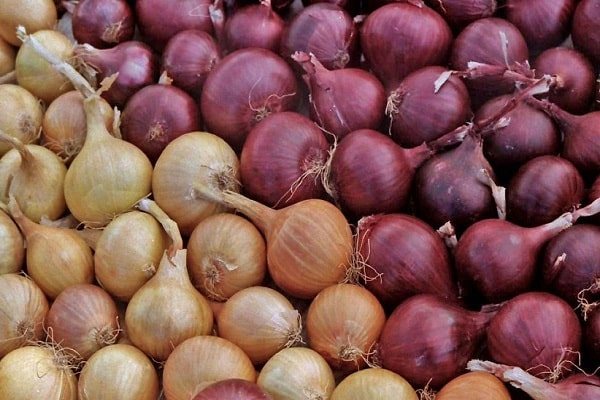

All varieties, such as onions, differ in growth, appearance, taste, ripening times. There are about 900 varieties of onions, but only 220 species are grown on the land. The most common types of onion: turnip, batun, shallots, leeks, slime, branched, multi-tiered, chives, fragrant.
Growing sweet onions
It is impossible to grow onion salad from seedlings, since such varieties do not exist. The reason is that almost all varieties of sweet and semi-sharp onions are stored for up to 4 months. Growing real salad onions is possible only from seeds. In practice, the division of onions according to taste (spicy, semi-sharp, sweet) is conditional, since the taste of the turnip can change. It depends on where the onion grows.
Salad onions are medium-dense and contain a large amount of water, which gives the inner scales juiciness. These varieties are cultivated most often in the south. Bulb varieties are very demanding in terms of sunlight. Southern varieties need 13-14 hours of daylight for normal growth.
Growing onions from seeds is preferable to growing onions from seedlings, since there is no need to fight various diseases and pests. The reason for this is the widespread downy mildew, white rot, viruses and pathogenic nematodes that threaten the seedlings.


However, planting with sevkom also has its advantages: a high level of germination, a powerful assimilation apparatus is formed earlier (as a result, larger bulbs), and resistance to weeds growing nearby is developed. It is these advantages that attract when choosing a planting method.
If the onion is sown on a small plot, and not on a hundred hectares of field, growing seedlings becomes more profitable.
Names of species and varieties
At the moment, breeders distinguish about five hundred varieties of perennial onions.
Onion
Fifty onions are known and successfully grown in the beds of Russian gardeners for decades. Batun has a number of valuable properties, includes vitamins and microelements.
The fistus bush looks sloppy, decorative properties are weak. Feathers can stretch to a height of 70 centimeters, while the stems themselves are wide and delicate. The batun is multiplied by arrows. There are different types of trampoline.
April
The April onion is grown both as a perennial and as an annual plant. Distinctive features and properties:
- One of the first appears in the spring from under the snow.
- The first crop can be harvested at the end of April.
- The increased content of vitamin C.


On a note! Inclined to form arrows. Grows poorly on acidic soils. Sowing in the beds is carried out by seeds, "bouquet" method.
May
Refers to high-yielding mid-season salad varieties of batun. The representative of the domestic selection. The bulbs are not formed, the May bunch is grown for greens. The decorative qualities are weak. The taste is spicy, pleasant. High content of vitamins and minerals.
May Batun has strong immunity, resistant to fungal diseases.
Long Tokyo
It is grown throughout the territory of our country. The bushes can not be replanted for several years, while the yield does not decrease.
Withstands harsh winters without snow. The bulb is not formed, suitable for fresh consumption. The taste is spicy, with a piquant bitterness.
Tenderness
Forms a low-spreading bush of small height, up to 40 centimeters. Tubular feathers with a slight waxy bloom. It winters well without additional shelters, is not afraid of temperature changes, and has good taste characteristics. Increased content of ascorbic acid.
Seryozha
It is used for greens, does not form a bulb, although it is considered an interspecific hybrid of a batun onion and its onion counterpart. The feathers are long, juicy, with a characteristic bluish tint. The taste of greens is sweet, full-bodied, slightly pungent.
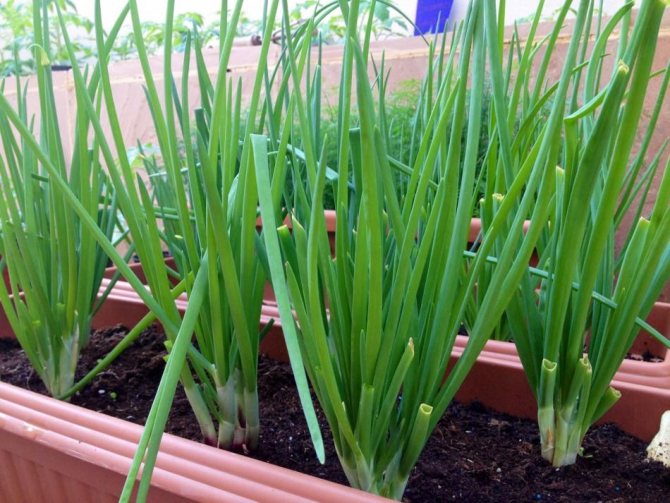

It is grown only in seedlings. Hilling and seasonal feeding are a must.
Fat-leaved
An early maturing variety of domestic selection. Differs in winter hardiness and high growth rates of fresh herbs after pruning. The bush is semi-spreading, the bulb is not formed. The stems are hollow, very juicy, suitable for making salads. High content of ascorbic acid.
Slime onion
A highly decorative type of onion, planted in flower beds and garden beds. The second name is drooping bow. It can be eaten fresh, as well as canned, dried and salted.
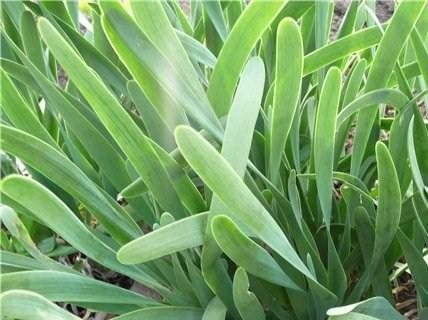

The green stems remain tender and do not coarse until late autumn. The leaves are thick, broad and fleshy. It is rich in microelements and has a high iron content in onion stalks. Used as a traditional healer: soothes pain, fights inflammation and fatigue.
Green
A high-yielding variety grown universally. Does not have any special requirements for care. Forms compact small bushes. Stems are flat, wide, juicy, delicate taste with a slight garlic odor.
Dwarf
Frost-resistant variety of slime, mid-season. Stems are wide with a slight waxy coating. Differs in the compactness of the bushes: the height of an adult plant is no more than 30 centimeters. Refers to salad varieties, grown in flower beds and beds. Fruiting until late autumn. Grows well on any soil, undemanding to watering, tolerates drought.
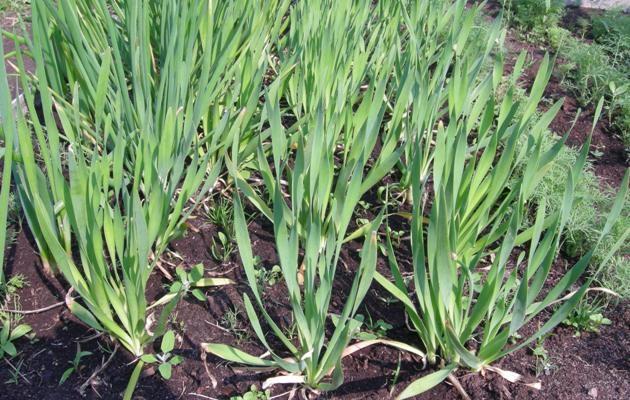

Leader
Universal purpose. Bushes are demanding for watering and regular loosening. After cutting, new stems grow back on the 40th day. It tolerates frosts down to -30 C.
Charm
It is magnificent as a decor due to its unusual beautiful flowers, reminiscent of snow-white fluffy balls. The yield of the variety is average, the bushes are small, compact.
Simbir
Recommended for growing in private household plots. Simbir is winter hardiness. The shape of the sheets is original - the plates are slightly twisted in the form of a spiral. The variety is mid-season, with a high yield.
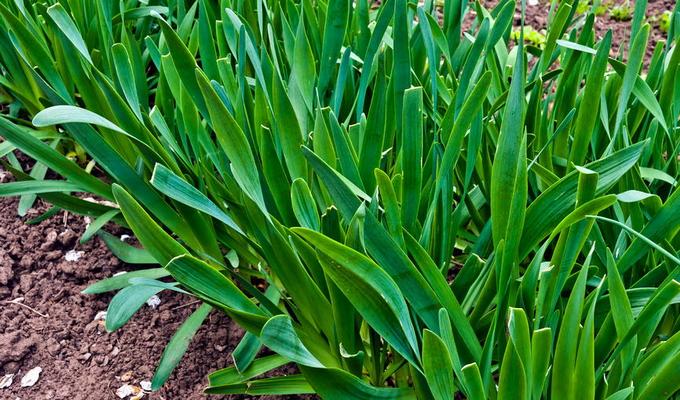

Salad
Refers to mid-season winter-hardy varieties. The purpose of the greens is universal, the yield is above average. Possesses excellent taste characteristics, pleasant light garlic aroma.
Well of health
Long-term yield is combined with high yields. The greens are tender, slightly pungent, spicy, with an unobtrusive garlic smell. Belongs to early maturing varieties. Growing in flower beds is possible.
Waltz
New variety bred in 2019. Ripens quickly, the leaves are twisted in an original spiral. Does not require transplanting for 5 years without loss of yield. Possesses winter hardiness and resistance to fungal diseases.
Multi-tiered
Horned bow, so in common parlance they call a multi-tiered type of perennial onion. It was brought to the beds of Russian gardeners from China. The "horned" relative differs from the batun in the type of flower arrow, the greenery looks like onions.
See also
Description of the Exibishen onion variety, cultivation through seedlings, planting and care
To read
The main stem of a multi-tiered onion ends with small bulbs. This is the first tier. Root bulbs should not be eaten. Chinese onions do not accumulate nitrates, they contain a large amount of useful components and vitamins. This species does not have a "rest" mode; greens can be harvested without interruption.
Likova
One of the most popular varieties of multi-tiered onions among Russian gardeners. The upper bulbs ripen large. The shape is round. Likov belongs to the early maturing varieties. Prefers neutral soils and plenty of sunshine.


Memory
A productive variety of perennial onions. The upper tier is formed from four bulbs of the original violet-burgundy color, elongated. There is a high content of carotene in fresh herbs.
Chelyabinsk
It is considered a super early variety. The stems are distinguished by high taste characteristics: juicy, tender leaves with a slight pungency. Chelyabinsk perennial onions are not afraid of frosts and severe winters with little snow. Resistant to a wide range of fungal diseases.
Chives
Known since the Middle Ages, where it was used as a medicine and decorative element for flower beds. Especially appreciated in European countries.
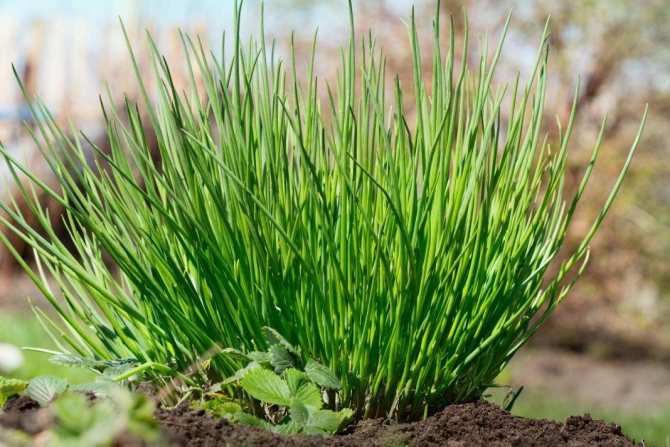

Shnitt-onion means "trimmed onion" (translated from German). In common parlance, it is often called restaurant onion or chives. It is a small bush with thin delicate leaves and a powerful rhizome. The flowering arrows are beautiful with bright purple inflorescences. Often planted as a fencing or curb crop.
Bohemia
The variety is high-yielding. You can grow without transplants in one place for five years. Able to give greens all year round, if grown indoors or in a greenhouse. Possesses high decorative qualities, honey plant.
Honey plant
Belongs to Russian selection. Differs in excellent taste, the stems have a delicate, juicy taste with a pungent pungency. The honey plant is resistant to peronosporosis.
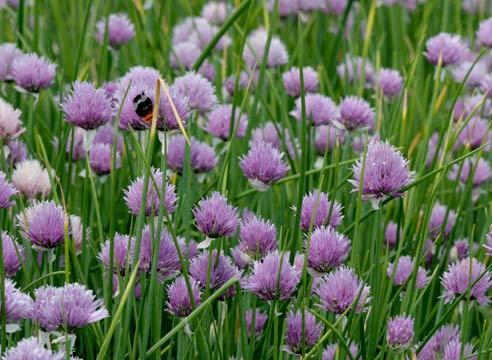

Chemal
Able to bring up to 7 kilograms of greens in one growing season. At the same time, it forms a small compact bush, the leaves grow back quickly after cutting. The taste of greens is spicy. The disadvantage is susceptibility to powdery mildew disease.
Spring
Forms a powerful, strong, tall bush. It tolerates frost and has good immunity. Productivity - up to 6 kilograms of greens per season, the taste is juicy, with little pungency.
Crocus
An early ripe variety of perennial onions. Average frost resistance, poorly tolerates winters with little snow, high yield, stems grow quickly after cutting. Differs in the high content of vitamin C in fresh leaves.
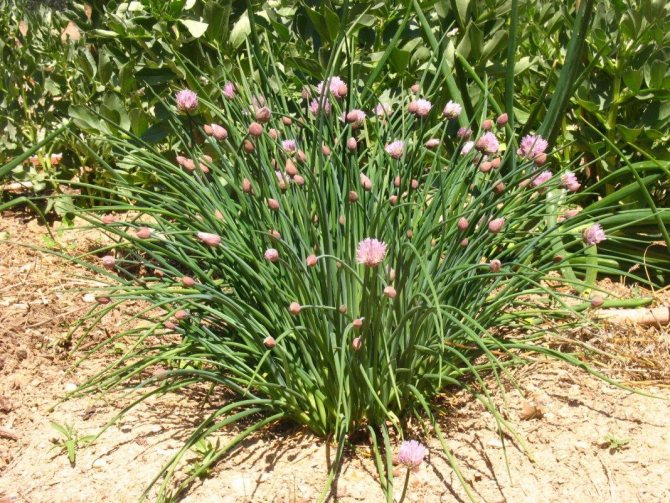

Shallot
A kind of onion.It was brought to Russia from Europe, homeland is the Middle East. There are several more names: family, Alexandrian, escalot. It is a representative of the two-year onion. Seed bulbs are grown from the seeds, which are planted the next year to obtain a full harvest. One seed bulb matures into a large “family” of 5-6 new bulbs.
Ayrat
Shallots, medium ripening. The onions are yellow in color with a spicy pungent taste, elongated. Able to form up to 5 children in an onion family.
Garnet
Family onion with early ripening. Resistant to yellowness of leaves, is able to delight gardeners with delicious fresh herbs for a long time. Red onions weighing up to 40 grams.
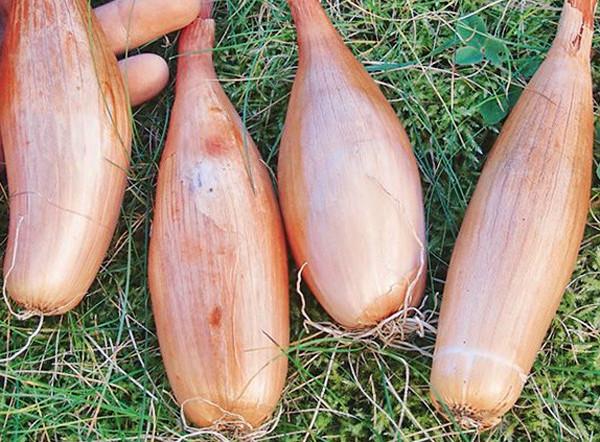

Sturdy
Family bow designed for long-term storage. The bulbs ripen large, oval, pale red in color. The strong man is distinguished by the ability to resist fungal diseases, resistant to the formation of arrows.
Vitamin basket
Super early maturing variety. Forms several onion families of 4-5 bulbs each. Ripe onions are pale golden in color. Differs in the ability to long-term storage. Strong immunity to fungal and bacterial diseases.
Emerald
A late-ripening variety intended for long-term storage. Forms 4-5 bulbs in one family, flattened, weighing up to 35 grams. The color at full ripeness is brownish-red.


Other types
In addition to the above varieties of perennials, other species and varieties belonging to the onion family are distinguished.
Oblique bow
In common people - bitter garlic. The oblique onion received this name for its external resemblance to the bushes of real garlic. It is often used in decorating flower beds and vegetable beds because of its beautiful and original inflorescences. You cannot eat the root onion; greens are suitable for preparing salads and decorating dishes.
Giant
Leaves are juicy, without wax bloom, suitable for canning and cutting for greens. Able to live in one place without a transplant for more than 5 years. Differs in good winter hardiness.
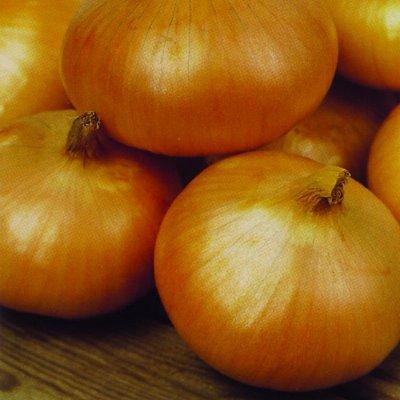

Newbie
Winter-hardy variety of slanting onion. The leaves can be salted and eaten fresh. It has been growing without loss of yield in one place for more than 10 years. Requires sunlight, unpretentious care.
Sweet onion
Used as a seasoning. The second name is Dzhusay. Popular in Asia, the Middle and Far East. In Russia, it is grown as a curb plant and in spicy beds.
Note: When grown next to berry bushes, protects plants from aphids and other insect pests.
Low-growing bush with horizontal rhizome. A wonderful honey plant. The inflorescences form on the arrows and have a pleasant, strong aroma. The leaves are flat, not tubular. The arrows, like the leaves, are eaten.
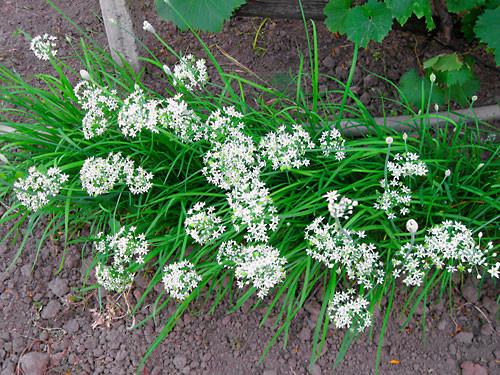

Witch doctor
Winter-hardy fragrant onion. Gives off fresh greens from early spring to late autumn. Honey plant. The leaves are tasty, with a little pungency and high in iron and fiber.
Fragrant
A high-yielding variety with a pronounced garlic aroma. Differs in high winter hardiness. Does not require complex agricultural techniques and regular maintenance. Excellent seasoning for soups and preserves.
Spicy
A salad variety of medium late ripening. Not afraid of cold weather and temperature changes. Delicious seasoning for salads and soups. Used as part of a flower arrangement on alpine slides.


Altaic
Representatives of this type of onion are listed in the Red Book and are not widely distributed. Grows on soils enriched with calcium, rocks. The second name is rocky or mountain bow. Outwardly, the Altai onion looks like a batun, is capable of forming up to 30 bulbs on one bush, and has a powerful root system.
Blushing
On the territory of Russia, it is distributed in the Caucasus and in the Crimea. Possesses high decorative qualities due to its beautiful inflorescences. Forms a low bush, up to 40 centimeters high.
Aflatunsky
Inflorescences in the form of huge purple balls. Forms a bush up to 1 meter high. High decorative qualities. Not afraid of prolonged drought and frost. Honey plant. The bulbs are rich in phytoncides that have antiviral effects.
Growing a vegetable
If a person decides to grow perennial onions, it is necessary to determine the territory. It is important to understand that in the next 6 years, the land will only be occupied by onions. The favorable development of the plant is carried out in drained and loose soil. It should be neutral and slightly acidic. Excessive moisture damages onions.


Preparing beds for culture begins with such events:
- In the fall, they dig up the beds.
- Fertilizers are applied - phosphorus, potassium or manure.
- Weeds are removed in the spring.
- Nitrogen fertilization.
Growing and grooming is an important process that must be given due consideration to get a rich harvest of onion feathers. The land plot should not be in direct sunlight. It's good if it's partial shade. The place of cultivation is protected from spring or autumn flooding with water.
See also
Description of the Red Baron onion variety, its characteristics and cultivationRead
On average, perennial onion species have a 2-year development cycle. In the first year, the plant pleases with a small rosette with leaves. On the second, peduncles, fruits and seeds appear. Flowers die off at the end of the season, and the onion develops thanks to the regenerating buds that are in the root system. Transplanting is carried out in two ways: by seeds or part of a plant.
Shallot varieties and their photos
Growing shallots "Atlas" F1 in the photo
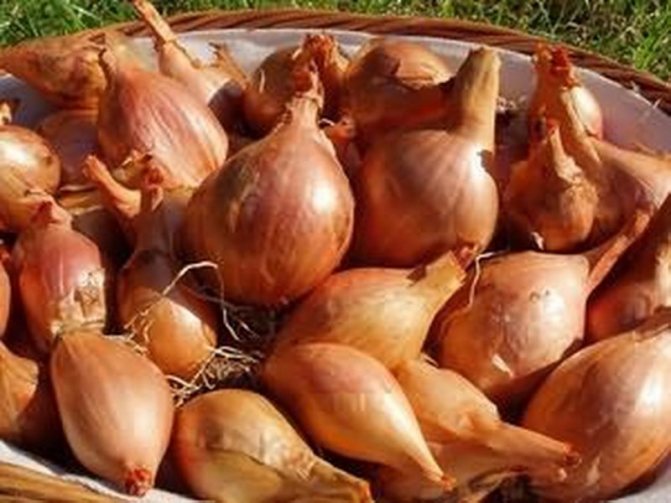

Shallots "Atlase" F1 in the photo
Atlas F1 - hybrid variety of shallots, early ripening, multi-bud bulbs, dense, beautiful bronze-brown color, excellent taste, shelf life for a long time.
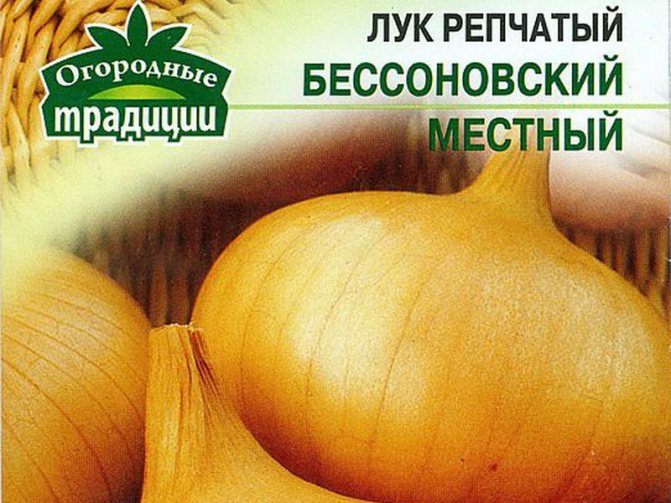

Seeds of shallot "Bessonovsky local" in the photo


Shallots "Bessonovsky local" in the photo
"Bessonovsky local" - early ripening (55-78 days from emergence to technical ripeness), drought-resistant, cold-resistant, pungent taste. The bulb is round-flat in shape, golden yellow in color. In the nest there are 4-5 bulbs weighing 40-65 g. It is grown in annual and biennial crops. Keeping quality is very good.
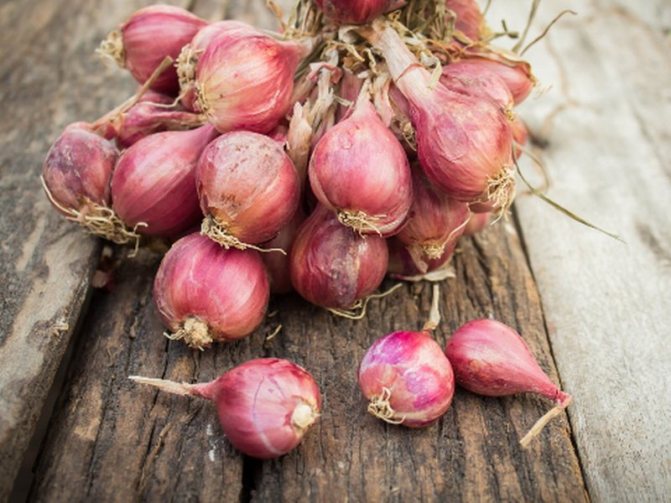

Shallots "Russian purple" in the photo
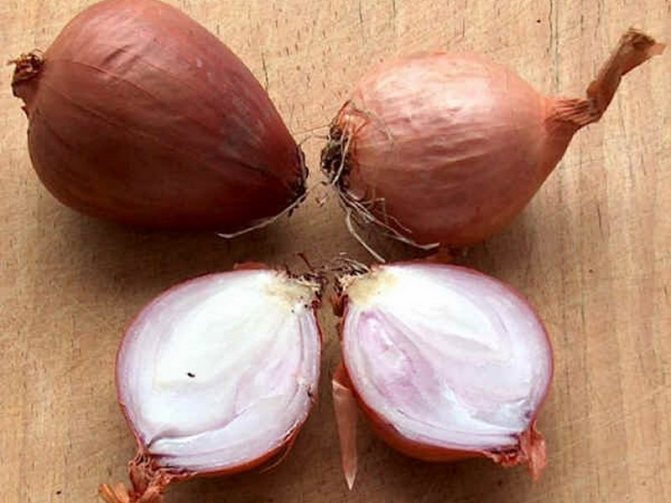

The bulbs of this one shallot have good keeping quality.
"Russian purple" - vegetatively propagated variety, high-yielding, early maturing, ripens in 90-100 days. The color of dry scales is violet. Forms 10-20 round-flat bulbs in the nest. One of the best shallots, the bulbs are good keeping quality.
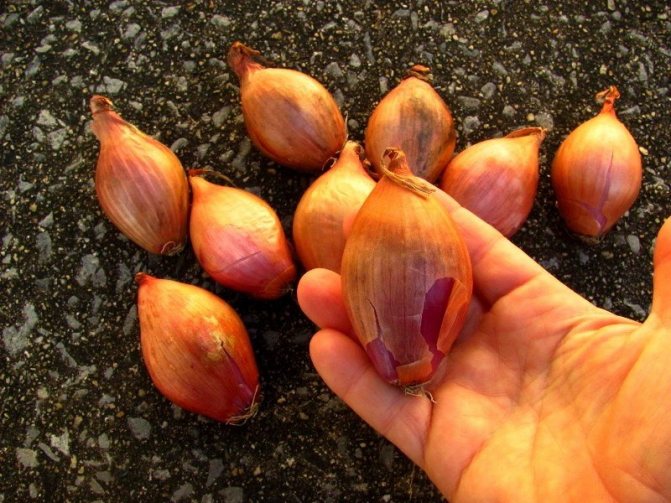

Shallots "Kuban yellow" in the photo
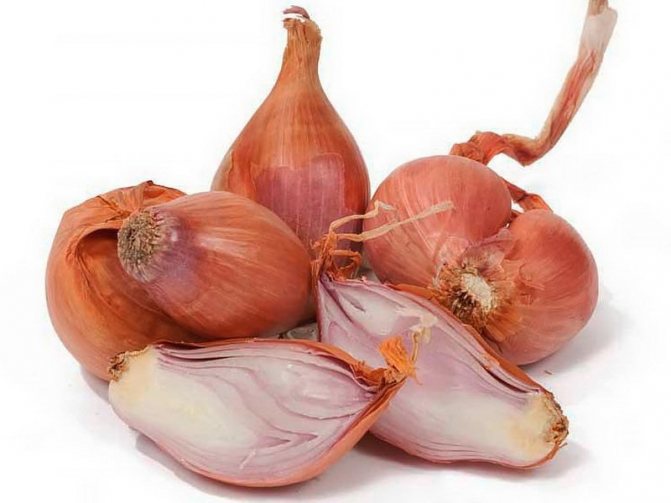

"Kuban yellow" - medium-nesting, high-yielding variety
"Kuban yellow" - medium-nesting, high-yielding variety (6-10 bulbs per nest), with a semi-sharp taste. The color of dry scales is yellow with a pink tint. Ripens in 90-110 days. It tolerates low soil moisture well.
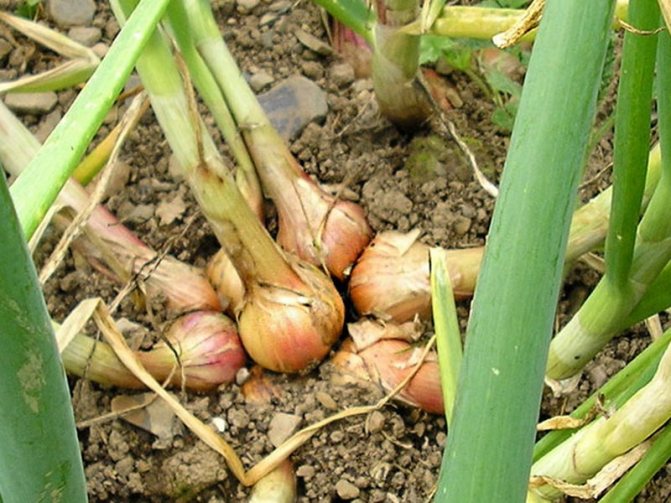

Sprint shallots in the photo
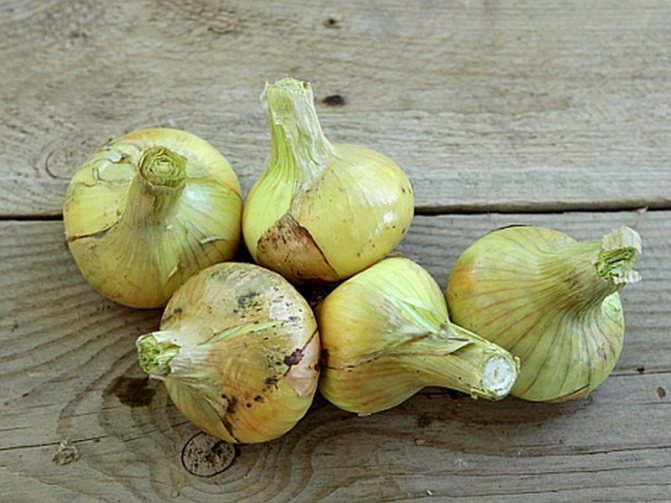

"Sprint" - early ripening variety
"Sprint" - early ripening variety, the period from full sprouting to mass lodging of leaves is 55-60 days.
Pay attention to the photo - this variety of shallots has round-flat bulbs, yellow, small-bud (the number of buds is 3-9):
Sprint shallots have round-flat bulbs in the photo
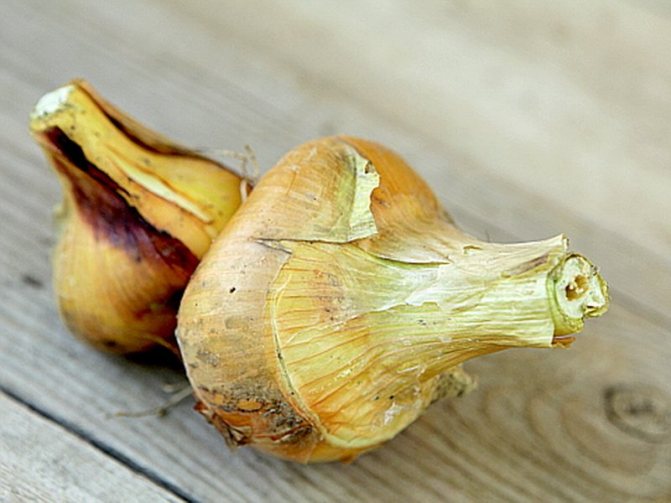

Shallots "Sprint" have yellow bulbs, small-ear
Bulbs weigh 25-45 g. The leaves are wide enough, almost like onions, but turn yellow early.
Description of sweet varieties
Exhibiting white salad onions are very sweet and juicy. Its ripening period is 130 days. Its turnip is round and very large - it can reach 500 g, but there have been cases when it weighed 700-800 g. The only disadvantage of this variety is its short shelf life (up to 3 months).


The Yalta variety is a sweet salad onion that belongs to the red varieties. It is highly prized for its taste. The turnip ripens in 140-150 days.The shape of the bulb is flattened at the top and bottom, and the color is with purple tones. Its weight reaches 200 g. Shelf life, like that of Exebishen, is short - only four months.
Ermak is the record holder for the speed of ripening. It can be harvested within 75-95 days after sowing. It has a soft and juicy texture. The size of the turnips is average, and it can be stored until the next season. Another plus in favor of this variety is its good immunity to environmental influences.
A little about onions
Of all the various types of onions, it is onion that is considered the best both in terms of taste and organoleptic properties, and in terms of the growing component.
Initially, onions grew in the mountains. This factor largely predetermined the structure of the plant, forced to grow in difficult climatic conditions, accompanied by long winters and dry summers. The plant survived because it "learned" to accumulate beneficial nutrients in the leaves, which today are called scales.
Today, onions are cultivated in different regions of the country - from Siberia and the Urals, to the South and Crimea. In accordance with the cultivation area, different onion varieties, characterized not only by different requirements for the growing soil, but also by a different ripening period, taste and organoleptic properties, the size of the onion turnip, used cultivation techniques, etc. Onions are usually planted twice a year, in spring and autumn. The first planting of onions occurs in early spring, and the second planting of onions in the winter, in the fall.
Before starting to familiarize yourself with onion varieties, I recommend looking at an overview of several varieties in practice.
BEAR ONION (Allium ursinum)
In fact, under this name, two types are combined, very similar in appearance and properties: bear onion (Allium ursinum) and onions
victorious, or victorious (Allium victorialis)
... Bear onions can be found in the shady forests of Western and Eastern Europe, as well as in the European part of Russia. But it should be remembered: this plant is listed in the Red Book. The victorious onion grows not only in Europe, but also in Siberia, the Caucasus, Altai, Mongolia, China. Japan.
Bear onion is also known as wild garlic, wild onion, wild garlic, kalba
... In culture, it is grown from seeds or propagated by bulbs. Seeds require mandatory stratification. The germination of purchased seeds is very low, however, it is saved by the fact that the wild garlic growing on the site is capable of self-seeding propagation. When choosing a place in the garden, it is important to consider that few vegetable crops will like the neighborhood with this onion.
In bear onions, the bulb is elongated, small (up to 1 cm in diameter). Leaves are oblong or lanceolate, wide (up to 5 cm wide), located on petioles.
Peduncle up to 50 cm high is formed in the second year of plant life. Small white flowers, collected in a hemispherical inflorescence, bloom in late May - June. In early July, the seeds ripen, and the ground part of the plant dies off.
Victory onion looks very similar to bear onion, but the plant itself is larger, and the growing season is longer (until August).
Growing conditions, soil requirements
Growing red onions is not particularly difficult if certain conditions are met:
- Correct site... The place should be sunny and well ventilated.
- Compliance with the rules of crop rotation... Red onions can be planted after cabbage, legumes, nightshades, spinach. You should not choose a site where other bulbs have already been planted over the past 3 years.
- Correct soil preparation... Red onions can be harvested as quickly as possible if grown on sandy loam soil. Loamy soil provides the best taste. Too dense clay soil is not suitable for red onions, since due to the formation of a dense crust around the rhizomes, the development of the culture stops. The problem can be solved by adding sand to the soil. An important point is the acidity of the soil.The optimal indicator for red onions is a pH level of 6.4-7.9. This means that the soil must be neutral or slightly alkaline. Too acidic soil requires alkalization by adding dolomite flour, slaked lime, ground limestone, chalk.
Soil preparation should begin in the fall. It is necessary to dig the selected area, get rid of weeds and insect larvae, and apply fertilizers. Effectively use organics and complex formulations.
In the spring, soil cultivation is also required. If it is light enough, then re-digging is not required - loosening is enough. The site must be leveled.
Growing features
The variety and type of the representative of the onion family is chosen that is suitable for the growing region and the purpose of the gardener: fresh greens, harvesting bulbs or decorating alpine hills and flower beds.
See also
How to deal with onion fly folk and chemical means
To read
Planting and transplanting
Perennial onions are easy to grow. It is important to choose the right place, because this bow does not like transplanting. As a rule, perennials are planted with seedlings in a previously prepared soil and a selected area. The onion should take root quickly, but suddenly something went wrong, the plant grows slowly, turns yellow, begins to wither. In this case, try replanting the plant.
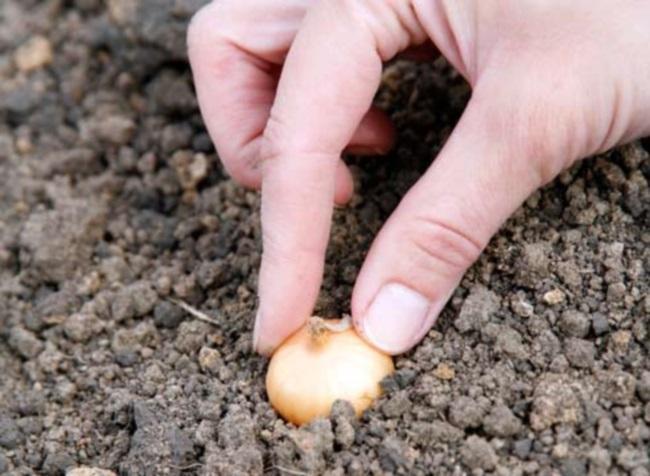

The bush is dug up together with an earthen lump and transferred to a new place. It is important to take into account all mistakes of the first landing.
Site selection
The site must be sunny, soil with a neutral pH. Stagnation of water at the roots is not allowed, the location of the beds should not be in the lowlands. Shade is also undesirable.
Berry bushes, flower beds or other spicy plants can act as neighbors of onion beds.
The predecessors of the crop rotation can be any, except for other representatives of the onion family.
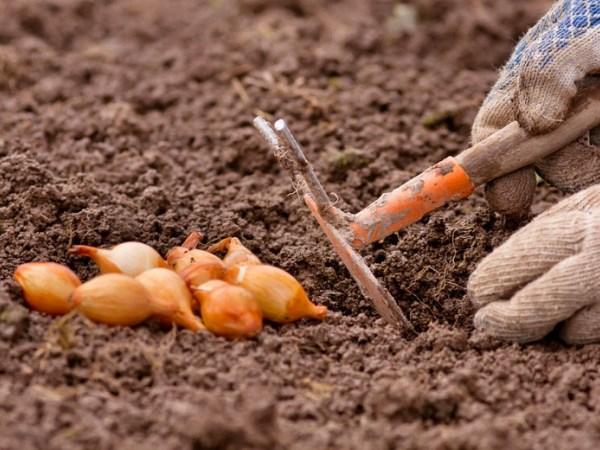

Soil preparation
The soil can be prepared in the fall: dig deep together with compost and wood ash. In the spring, the beds are loosened and a little superphosphate is added. It is advisable to disinfect the soil with potassium permanganate or scald with boiling water.
It is necessary to determine the acidity of the soil using litmus paper. If the acidity is increased, liming must be done with hydrated lime or chalk. Onion plants do not like weeds, they must be removed at the time of autumn and spring digging.
Important! You can not bring fresh manure to the beds, the onion will get burned, turn yellow and die.
Landing scheme
Many types of perennial onions are grown as curb fence plants. The distance between the bushes depends on the width of the mature bush being formed.
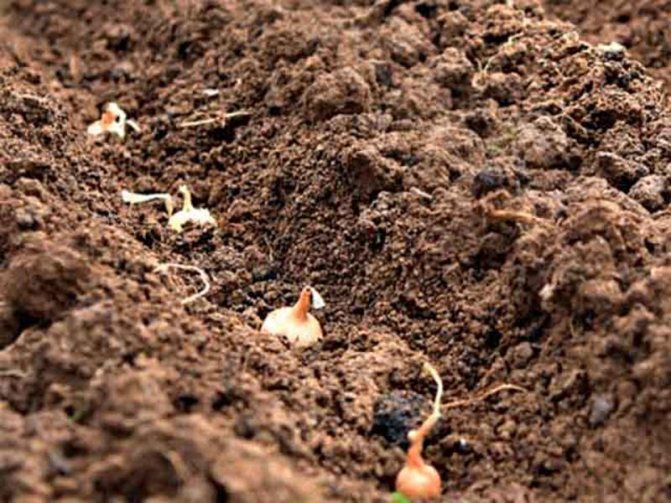

Family onions are planted according to the principle of planting onion sets, but the interval between the onions is increased under the "big family" to 15-20 centimeters.
Timing
Perennial onions are planted in autumn or early spring. The choice of timing depends on the purpose of planting and the purpose of the onion beds. Onion seedlings are sown in mid-March; young seedlings can be planted in the ground from the end of April. Soil temperature should reach +10 C. Dates of planting may vary depending on the region and climatic conditions.
Mulching
The rows of onions are covered with mulch as a preventive measure against weeds and to save moisture. The best options are sawdust, straw, or sand.
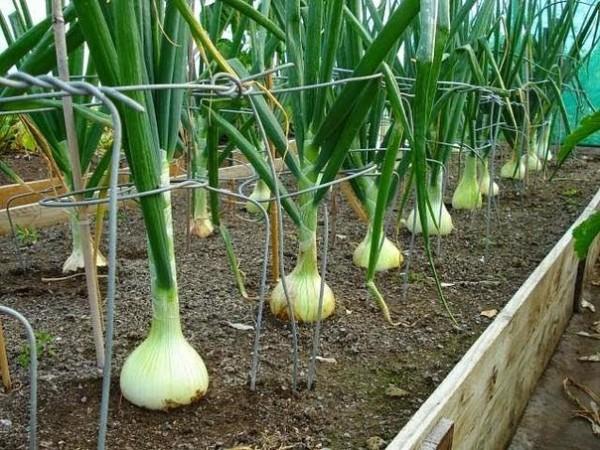

Dividing the bush
A great way to propagate perennial onions is by dividing the bush. The procedure is best done in August. The plant is carefully separated, trying not to damage the root system, and transplanted to a new place.
Care
Perennials do not require complex care. If you choose the right place in advance, then caring for the plants will consist of weeding and loosening. Watering is usually adjusted to the rainy season.
Weeding and loosening
It is recommended to loosen the aisles after watering. All weeds must be removed. The beds overgrown with weeds reduce the yield by 3-4 times.


Watering
After planting the plants in the ground, watering is required.Water should not fall on the leaves, it is better to water it at the root. In the future, the onion does not tolerate excessive moisture and excess moisture at the roots. An outbreak of fungal diseases begins, the leaves turn yellow, the perennial withers.
The irrigation system is adjusted to the current weather conditions.
Protection against diseases and pests
Perennials are susceptible to standard onion diseases: downy mildew, rust, onion flies and thrips. Plants should be inspected regularly for signs of disease.
Preventive treatment includes:
- Spraying leaves with brilliant green solution: 10 drops per 10 liters of water.
- Sprinkling wood ash on plants in calm, dry weather.
- Compliance with the rules of crop rotation.
- Timely weed removal.
- Perennial onions are planted away from the annual.
In general, perennials are unpretentious, with a good choice of location, they do not get sick and do not cause difficulties in care.
Top dressing
Perennial onions do not need special feeding. A one-time watering of the beds with bird droppings or mullein infusion during the period of active growth is enough.
Preparing for winter
In late autumn, perennials are pruned, the bushes are covered with humus and mulched with straw, sawdust. Plants with low frost resistance can be covered with spruce branches, which are immediately removed in the spring after the snow melts.


Vegetative way
Onions can multiply not only by seeds. You don't need to harvest the seed to grow new crops. Dividing a bush is another effective and easy way to propagate a perennial. Moreover, this option is suitable for any type of vegetable.
The division principle is simple. To do this, take a bush that has reached 3 years of age and divide it into small bushes. The procedure is best done in mid-spring or late summer. If the perennial grows on the site for a long time, it is ready for reproduction.
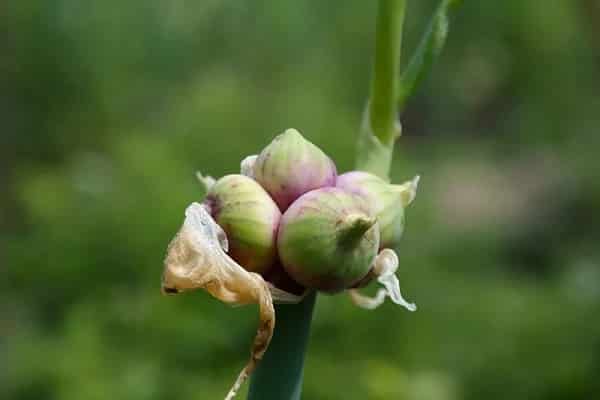

How to grow a full-fledged plant from individual bushes that gives a rich harvest of greenery? To do this, you need to take the separated part with the bulb and place it in the ground to a depth of 8–11 cm. The root system must be developed, otherwise the culture will not take root or will be weak. If, after dividing a large bush, such specimens are present, they are planted to a depth of 5 cm.
Green onions or shallots
Shallots differ from ordinary onions in that under the common shell of the bulb are several small cloves, like garlic. Because of this feature, the bulbs of the plant are rarely used for food, however, green shallots are highly prized. Such green onions are used for salads, for dressing first courses, or simply as a source of fresh vitamins and herbs in autumn and winter.
Growing tips
It should be borne in mind that if you let the shallot sprouts grow more than 20 centimeters, the bulb can release an “arrow” for flowering and growing seeds, which should not be allowed. It is enough just to cut off long shoots and use them for food, and then the bulb will grow new shoots again.
The green shoots of this plant are rich in vitamin C as well as certain types of minerals such as germanium, silicon and titanium. In its composition, it is very different from onions, so eating green shallots sprouts has an extremely positive effect on human health.
SHNITT BOW (Allium schoenoprasum)


It is also called chives and l. speed. A very unpretentious perennial plant. In one place it can grow up to 10 years, but its quality is noticeably deteriorating. therefore, it is recommended to transplant and divide the overgrown clumps at least once every 3-4 years. Prefers fertile, well-moisturized, neutral soils.
The plant is very hardy. In early spring, the feather of chives grows back earlier than in other species, and survives frosts down to -4C.
Can be used for forcing greens at home.
Propagated by seeds and division of turf. Can give self seeding. Does not form bulbs; forms small (up to 4 cm long) false bulbs, turning into a false stem. The feather is green, subulate, thin (up to 0.4 cm in diameter), up to 40 cm long. It is appreciated for its delicate mild taste without bitterness. Has a slight garlic aroma.
When grown from seed, only greens are formed in the first year. Starting from the second year in May, thin rigid peduncles up to 60 cm high appear, which are crowned with medium-sized spherical inflorescences consisting of small pink-lilac, light purple, red-purple or (less often) white flowers. Blooms in May - early June. After pruning, it can bloom again in the second half of summer. Seeds are black, small.
It is used not only for culinary but also for decorative purposes: chives are an excellent curb plant. It is very effective during flowering and grows back quickly after cutting. Good honey plant.
COMMON VARIETIES OF SCHNITT BOW:
Siberian, Early ripening, Spring Moscow, Prague.
Schnitt
There are a lot of varieties of perennial onions. We will only dwell on some of them. It's worth starting with chives.
This variety is also called chisel or speed. Schnitt is used primarily for decorative purposes. It is grown by many gardeners in most of the country.
The average life cycle of chives is 3-5 years. This plant reproduces well by seeds, self-sowing, tussocks of bulbs, forms an overgrown sod.
The size of the bulbs is small. They are not eaten. The value in this plant is represented by narrow fistulous, slightly rough feathers. Their width is about 2-7 mm, and their height is about 40 cm. Onion greens will remain tender and will not become coarse if cut in time.
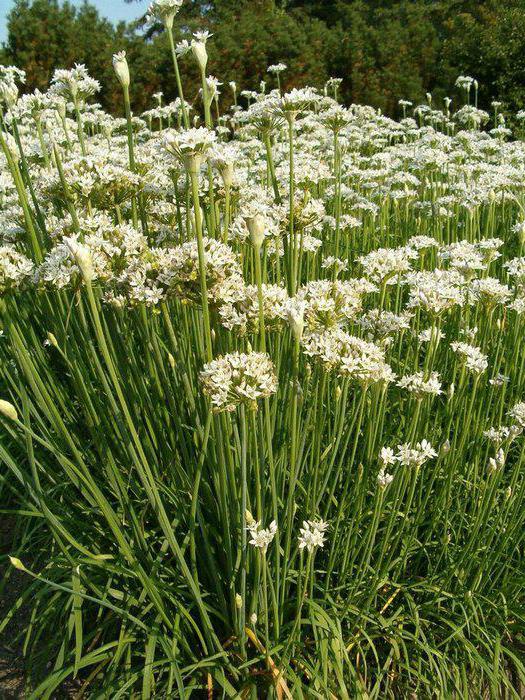

Schnitt's flowers are spherical. The shades are very diverse - from pink to purple. Flowering does not affect the quality of the life cycle. This period falls on May-August.
Chives are a very unpretentious plant. He successfully takes root in the northern regions. However, this culture requires abundant watering.
Some gardeners plant it exclusively for greenery, others use the plant to decorate the site. Islets of chives effectively accentuate the borders; they look great on alpine slides. In the latter case, it is preferable to plant onions from the east and south sides.
Growing various types of onions: summer residents and gardeners advise - reviews and recommendations
My collection of onions
If you want to expand your gardening collection and experience, go on a tour of your friends' garden beds - be sure to find something useful for yourself.
You to me - I to you
"Let them say that there is no female friendship ..." - sings in a famous song. But I know what it is, because my friend and I have been friends for almost half a century! And we met back in 1971, becoming students of the Rostov Pedagogical Institute.
After graduation, they parted for distribution, but they did not lose connections. And over the years, our friendship has only grown stronger. When my husband and I bought a car, a tradition arose - we still go to the "May" and "November" ones to Donetsk, where my friend settled (and she had become a godfather to us by that time - she baptized our daughter). But the main thing is that during each such trip we have a great resettlement of plants: the seedlings of annuals and vegetables are sent there, and back - new items that you will not find in our region.
During another "excursion" around my friend's garden, I noticed a strange green bush with long flat leaves. To my question, a friend replied that a neighbor shared this miracle with her, she does not know the name, but this is some kind of perennial onion with the taste of garlic. Obviously, I immediately begged for a "seedling". The newcomer got accustomed to me perfectly, overwintered and in April gave out tender leaves with a piquant taste.
By the summer, it was already a decent bush with a lush head, quickly recovering after pruning for food. I used this onion in salads, and in sandwiches, and with first and second courses.
In the summer, my older sister came and went to my garden to check what was new. Suddenly I hear screams. I jumped out of the house, my sister ran to meet him: “Your dzhusai is growing! Where did you get it ?! " She lived for many years in Kyrgyzstan, where this jusai is an essential component of many dishes. In general, mutual joy was above the roof: I was glad that the onion had found a name, my sister - that she could now revive my favorite recipes. Part of the bush left with her.
Tiered bow
From experience I will say that of all bows this is the most unpretentious. It has been growing in one place for six years, does not require any shelter for the winter, no planting, transplants, or regular watering (and the leaves do not shrink). And at the end of the season, the garden bed also becomes a flower bed - dzhusai inflorescences are very decorative and attract a lot of "romantic" insects: butterflies, bees, ladybirds. And it blooms for one and a half or two months, and then I cut off the inflorescences so that the seeds are not sown all over the garden, although from time to time new bushes still appear in the most unexpected places, and then I dig them up and give them to friends - no one has refused ...
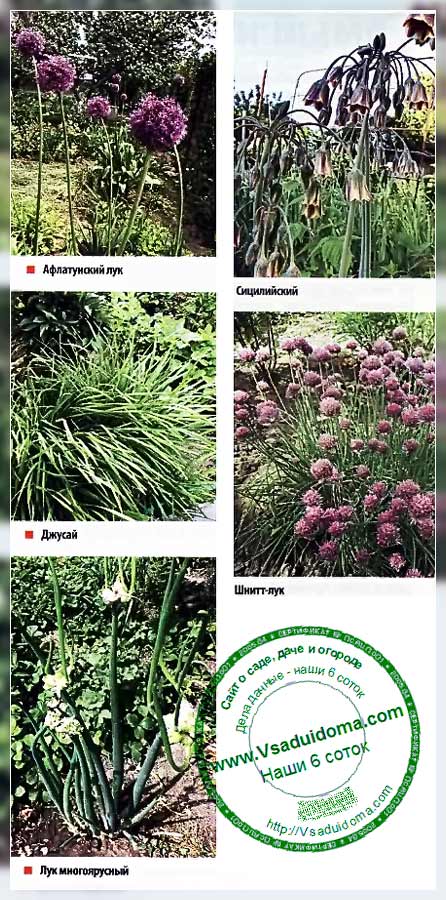

And a couple of years ago, from my beloved friend, I brought three onions of another onion, rare in our area, a multi-tiered onion. At the beginning of the growing season, it resembles a batun onion, but later on the arrows not even inflorescences appear, but, as it were, airy bulbs. Usually the first tier is formed at a height of 50-60 cm, and the first bulbs are the largest. Then, on the same peduncle, the next "floors" are formed with slightly smaller bulbs, and if the arrows are not pinched, they lie on the ground, and then the bow goes on a free journey through the garden.
Greens appear very early and are particularly juicy and tender. The leaves retain these qualities for 3-4 months, until the arrows form. By the way, puffed onions do not taste as pungent as ordinary onions, and therefore they can be used in salads and for pickling.
The onion's root system is very powerful, so it does not require special care and does not die out even in cold, snowless winters. And if you install high arcs with a film in February, then the greenery will grow in March.
I also brought a chive bow from a friend. But M.A. wrote about him so well. Bondarenko that I will not repeat myself. I subscribe to her every word! Only now my shnitt is already 10 years old, and he began to shrink. Therefore, this year I plan to plant it, following the example of the author, around different beds.
Actually, I am a big fan of all types of onions, and not only edible ones. My garden looks like a flower garden, where decorative bows (Sicilian, Christophe, Moli) bloom all summer, and between them is a self-sown calendula.
And I don't even remove dandelions, because I collect their inflorescences and make wonderful fragrant honey out of them. And how wonderful it is to go out into the garden in the morning and see that it is "golden"! They disagree with me, but I believe that dandelions do more good than harm, and in an aesthetic sense too. After all, man does not live by bread alone! In addition, in early spring, a wonderful vitamin salad is obtained from their leaves.
ORDER QUALITY AND CHEAP SEEDS AND OTHER GOODS FOR HOME AND COTTAGE. PRICES ARE BOTTLE. CHECKED! JUST LOOK FOR YOURSELF AND BE AMAZED HOW WE HAVE REVIEWS. GO >>>
Below are other entries on the topic "Cottage and garden - do it yourself"
- How to cut shrubs correctly: Cutting and shaping shrubs - ...
- Why and what is the onion sick with ?: The onion rots - the reasons and ...
- Multi-tiered onions - how to grow: Growing and planting multi-tiered onions Onions ...
- Do-it-yourself decorative flower bed: How to make a decorative ...
- A simple and easy way of harvesting seeds for the next year: Simple to the point of disgrace but effective ...
- Do-it-yourself vertical bed from a barrel: How to make a vertical bed from ...
- Blushing onions planting and care: Growing blushing onions - planting, ...
Subscribe to updates in our groups and share.
Perennial care
Despite its unpretentiousness, the plant needs basic care. The development of the bulb and the yield will depend on the interest of a person in this matter.
Watering
Perennials love to grow in moist soil. At the same time, water should not stand in the bushes. An excess of liquid provokes root rot and spoilage of the crop. Periodic watering is recommended, which is done after each appearance of a new feather.
Fertilization
Perennial onion varieties love periodic feeding. Potassium and phosphorus are added in autumn, which allows the bushes to survive the winter well. After collecting the last feathers, the soil is enriched with nitrogen. Any other fertilizers are applied in the fall.
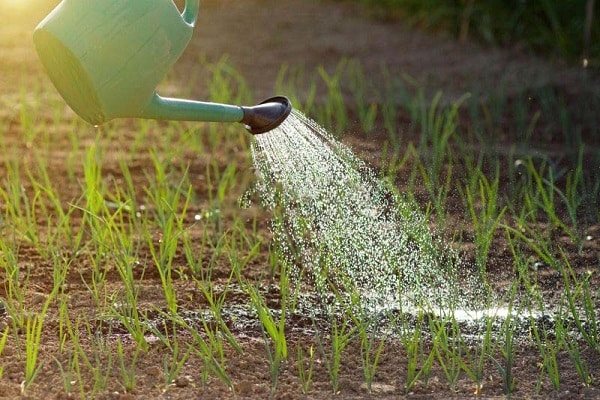

Attention to the soil
Perennial onions do not tolerate neighborhoods with other crops, in particular weeds. A person must prepare for numerous weeding of beds with greenery. During the season, the land can be loosened. Small pests are not so dangerous, but you should also get rid of them.
A competent approach to choosing a variety of perennial onions allows you to provide the gardener's family with vitamins for the whole season. Those who do not need careful care, are resistant to diseases and bring a stable harvest enjoy success. If you eat the vegetable regularly, you can increase the protective properties of the immune system.


Testimonials
Rudalev Valery Anatolyevich, 32 years old, Perm: “I practice growing perennial onions in combined beds at my dacha. Parsley, dill, lettuce, garlic, allspice, tiered onion, and slime. Greens are perfectly combined, does not require special care. Perennials are planted mainly along the edges of the beds, the plants do not interfere with each other and grow well together. For the winter, I cut the bushes and cover them with spruce branches. All season I have a set of fragrant spices on my table. Combined garden beds are very convenient and beautiful. "
Uksun
This species is rarely found in the plots. Wixun is also called mountain garlic. Outwardly, it is close to garlic. It has the same thick stem, from which flat leaves alternate. Their thickness reaches three centimeters. However, vinegar blooms like all onions.
This culture is distinguished by its taste. It tastes like garlic and onion at the same time. The leaves are ready for consumption at the end of May. However, by the end of summer, the leaves become tough. They are used instead of garlic in conservation.
Decorative bulgarian onion
In decor and landscape design, bulgarian bows, chives and blue bows are very often used. These types of plants are not used in cooking, because they have too dense stems, but thanks to their bright and variegated colors, people have found use of these types of onions in decor.
Interesting facts and uses in decor
An interesting fact is that in their natural habitat, such plant species use bright and variegated flowers both in order to scare away herbivores and to lure bees, bumblebees and other insect species - pollinators. People appreciate the Bulgarian onion for its tall plant and bright purple flowers. Their graceful shape and beautiful color make this plant indispensable in the middle tier of decorative work on the personal plot.
Beneficial features
Perennial onions are used for food, planted in flower beds as ornamental plants. When blooming, they attract bees and therefore are good honey plants.
Possess phytoncidal and bactericidal properties. The green mass contains a lot of vitamins, amino acids, essential oils, and various microelements. Regular consumption of green leaves improves the functioning of the circulatory system and gently lowers blood pressure. Affects appetite and strengthens the body's defenses.The digestive system restores its work, the complexion improves, the hair becomes strong and their growth is enhanced.
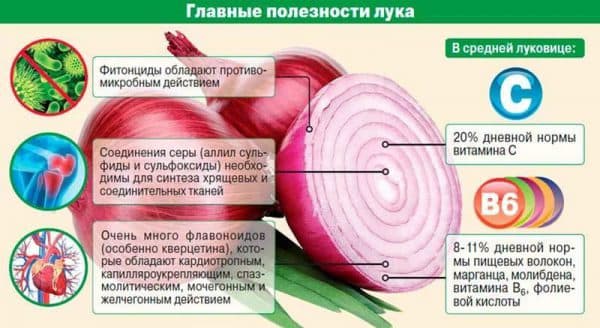

Mid-season varieties
Aleko
This bright, tasty onion succeeds equally well through sowing seeds and planting seedlings; in the latter case, the harvest is obtained in 100-110 days. The shape of the onion is round, weight up to 60 g. The pulp of a spicy rich taste, dense, white with a lilac hue. The upper scales are purple with a purple tint.
The yield is stable, above average - up to 19.6 kg per 10 sq. m. It ripens well on the plot - up to 94%, needs short-term ripening, after which it is stored perfectly.
Odintsovets
Rounded golden bulbs are well preserved, transportable and suitable for mechanized harvesting. The size is medium - 60–80 g, the flesh is white-creamy, with a pleasant harmonious taste and light pungency. The integumentary scales are dense, golden-bronze.
Harvested in 110-120 days from the emergence of shoots, receiving an average of about 15 kg per 10 square meters. m. A significant drawback is susceptibility to downy mildew and neck rot, so plants need regular fungicide treatments during the growing season.
Setton
A versatile onion with high palatability and excellent preservation, ripening 110 days after planting. On average, it weighs about 120 g, under optimal conditions it can be larger, up to 150-190 g. The shape is rounded-oval, slightly elongated at the neck. The color of the integumentary scales is yellow, in the area near the neck it is brownish. The pulp is creamy, spicy-sweet, piquant.
The yield is high, with good agricultural technology, you can get up to 50 kg from 10 sq. m. Resistance to fungal diseases and shooting is above average.
Krasnodar G 35
An old reliable variety of domestic selection. The crop is harvested 110-120 days after sowing. The bulb is medium-sized, one-dimensional, weighing about 100 g. The cover scales are yellowish-brown with a slight pinkish tinge. The pulp is white, with a semi-sharp taste.
Stable harvest, you can collect up to 20-40 kg from 10 square meters. m. Maturation largely depends on weather conditions and ranges from 50–95%, keeping quality is mediocre. In damp cool weather, it is affected by fungal diseases - peronosporosis and cervical rot.
Diseases and pests
| Slugs Ways to fight:
| |
| Powdery mildew Ways to fight:
|
| Onion fly Ways to fight:
|
Growing seedlings
You can grow seedlings both in a greenhouse and on a windowsill. The best age for planting seedlings is 50-60 days.
Seeds are sown in early spring (mid-March). The seedling container should have a hole in the bottom. In front of the ground, a little expanded clay should be poured into it to create drainage. You need to fill it with the composition by 15 cm, preheating it and disinfecting it. It is possible to use ordinary peat soil for sowing seeds, but it should not contain "living earth".
It is necessary to lay out the seeds on the prepared soil and cover them with a layer of soil 0.5 cm thick. The field of this is covered with a film and placed on the windowsill. Moisten and fertilize the soil as needed.
The optimum temperature for seeds is 20-25 ° C. After the first shoots appear, the film is removed, and the temperature should be reduced to 16-20 ° C.The high temperature causes the sprouts to stretch and weaken.
A month after the first shoots, secondary roots appear in the shoots. At this time, the soil must be saturated with moisture and a weak soil solution. This contributes to the normal growth and development of the seedlings. Top dressing should be done once a week.
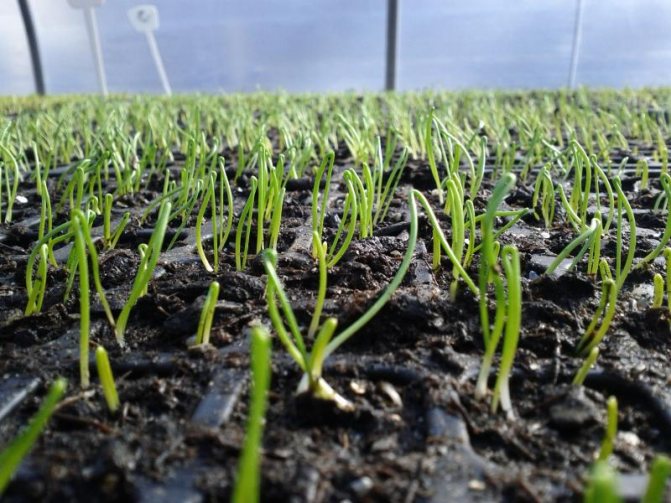

When the sprouts are strong and ready for planting, in warm weather they can be left outside and hardened for 2-3 days.
Features of the view
Shallot, unlike a number of other perennial onions, is a demanding plant. A special area is needed for it. Shallots are not suitable for decorative purposes. Neighborhood with annual onions can lead to degeneration of the shallots and the loss of their taste.
The most common varieties in Russia can be considered Siberian yellow, Sprint, Druzhnaya family, Bananovy, Delikates.
Most of the shallot varieties are suitable for planting in the middle zone of the country. In addition, it tolerates cold well; its bulbs remain viable even at very low temperatures. Therefore, it can often be seen in vegetable gardens in the Far East and Siberia.
Bulbs for the next planting are dug up, as a rule, at the end of summer. To get juicy greens, sowing is recommended immediately after the snow melts. To ripen the bulbs, sowing is carried out under the first snow, in the fall.
ONION (Allium porrum)
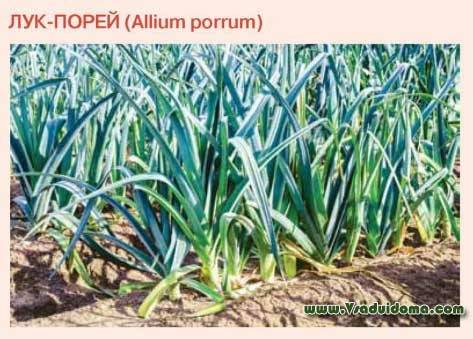

It is also called pearl bow... A perennial plant that is more often cultivated as biennial or annual. It is one of the oldest vegetable crops. His homeland is considered the Mediterranean, where leeks were grown 4 thousand years ago. In the wild, it is found in many Asian countries, in North Africa and a number of European countries (France, Spain, Italy).
It has been cultivated in Russia since the 20th century. At first, leeks were cultivated mainly in the southern regions, but gradually they spread everywhere, although to this day they are inferior in popularity to other species.
In the first year of a thickened false stem (it is called "leg") grows 12 - 15 large, flat lanceolate leaves up to 60 cm long. Leaves are bluish-green, with toe bloom. They resemble garlic in shape and location. Does not form a leek bulb. There is a thickening in the lower part of the stem - a false bulb.
In the second year, in June-July, a peduncle up to 120 cm high is formed. In July, small flowers (pinkish, whitish, lilac or purple) bloom on it, collected in a large umbellate inflorescence. Some varieties of leek form, instead of flowers, airy bulbs - bulbs. In flowering varieties, black wrinkled seeds ripen in August-September.
Leek is propagated by seeds. They are grown mainly in seedlings. They mainly eat a false stem, less often young leaves (old leaves are rough, tasteless). To enlarge the lower - white - part of the false stem, the leek is huddled high.
This onion is suitable for long-term storage if the conditions are right for it. The dug out plants are cut off, placed obliquely in boxes, sprinkling the root part with wet sand, and then removed to the basement. At a low positive temperature, the leek prepared in this way can be stored until spring. At the same time, which is especially valuable, the content of vitamin C in it does not decrease.
POPULAR POREE VARIETIES
‘Karantansky’, ‘Alligator’, ‘Goliath’, ‘Pandora’, ‘Tango’.
Growing by seeds
Any type of onion can be grown from seed. The peculiarity of the method is that the seed must be fresh, harvested no earlier than a year before planting. Onion seed germination drops rapidly.
Seedlings can be grown from seeds or seeds can be planted directly in the ground. Presowing preparation includes:
- Calibration and rejection of seed.
- Disinfection of seeds.
- Soil preparation and disinfection.
- Soaking and germination.
Sowing terms depend on the cultivation method: seedling or non-seedling method, as well as the growing region and natural and climatic conditions.
Ramson
This species became popular due to its early ripening period. At the beginning of April, you can use the first greens. Ramson is also called wild garlic or bear onion.
After the end of flowering, the active growth of the culture stops. Wild garlic bulbs are not used in cooking. The leaves of the plant are similar to the leaves of a lily of the valley.
The most popular varieties are Bear cub and Bear ear.
As a decoration of the plot, wild garlic is not grown. At the same time, she feels great next to berry and fruit crops. The plant contains phytoncides - substances that repel pests.
Tiered bow
This species is the only viviparous one. Its bulbs ripen above the ground and release new leaves. The tiered bow is also called the Egyptian, horned, walking bow.
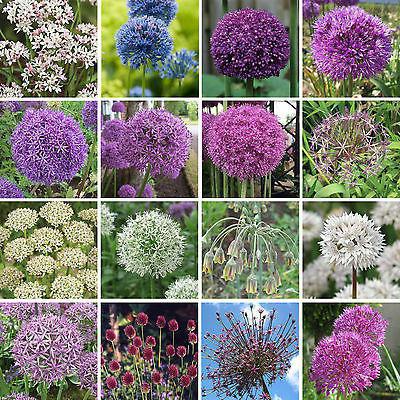

During the first year, it resembles a batun. In subsequent years, the development of the bow takes place with the help of arrows.
Greens can be consumed throughout the season. All summer she does not lose her properties. Tiered onions have a spicy, pungent flavor.
The bulbs can also be eaten. They are also used for sowing. The bulbs take root excellently in the ground. They form nests like shallots.
Main varieties: Memory, Odessa winter, Likov, Gribovsky 38.
It should be said that multi-tiered onions are not planted for decorative purposes and next to other varieties.
Shallot
This species is considered one of the most delicious. Shallot is prized for its delicate aroma and sweetish taste of the leaves. The bulbs of the plant, although rarely, are also eaten. The plant is especially popular in France.
Shallots are usually grown for greens. It has a lot in common with onions. In this case, the shallots are more branched, and the small oblong bulbs form nests. They are easy enough to separate when digging up. On the next planting, they reproduce very well. The ability to quickly update allows shallots to be grown on an industrial scale.
Growing technology and care of onions in the open field (with video)
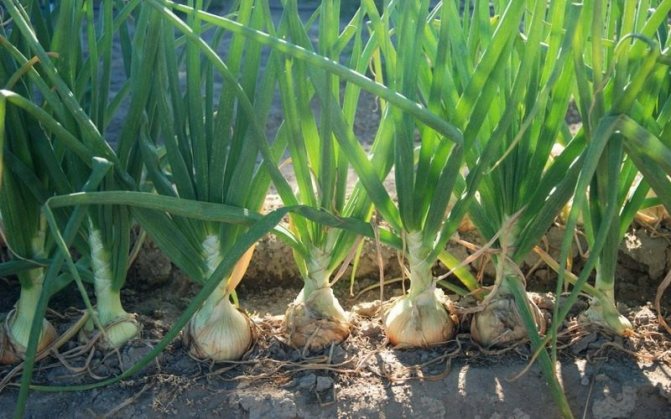

Onions in the photo
Of the cultivated species, onions are the most widespread. It is not very rich in vitamins. True, green onions contain much more vitamin C than onions, more potassium, calcium, phosphorus, and iron salts in it. But the main advantage of all types of onions is essential oils, which stimulate gastric secretion, increase appetite, and, finally, phytoncides are fierce enemies of bacteria.
Using one or another cultivation technology, onions can be grown in one year from nigella seeds and in two years from onion sets.
With an annual onion culture, seeds are sown as soon as the soil allows in March. The time from sowing to emergence is 21 days. They accelerate the emergence of seedlings by pre-sowing heat treatment of seeds, soaking them, including in growth stimulants. During the period of seed germination and after the appearance of the fifth leaf, onions must be watered. With a lack of moisture in the soil, the growth of leaves stops, and small, underdeveloped bulbs are formed, even if there are only 2-3 true leaves. Then the plant falls into a dormant state. This phenomenon in onions is irreversible. Therefore, violation of agricultural techniques for growing onions in the open field, especially in the first 70-80 days of growth, can lead to large crop losses.
For the successful cultivation of onions, seeds are sown in rows, the distance between them is 20-25 cm, the planting depth is 2-3 cm.It is useful to mulch onion crops with humus, which prevents the appearance of a soil crust, retains moisture in the soil, which contributes to the appearance of friendly shoots.
At first, onion shoots grow very slowly, they need to be watered and loosened. Loosening should not be deep (4-5 cm) so as not to damage the root system.
When 1-2 true leaves appear, the first thinning of crops (up to 1.5-2 cm) is carried out in strongly thickened places, removing weaker plants. After the formation of 3-4 leaves, a second thinning is done already at the final distance of 4-6 cm.
When growing and caring for onions with thinning, as with watering, you must not be late. Otherwise, thickening and dryness of the soil accelerate the formation of small bulbs with an insufficient number of leaves.
For growing onions through a set, healthy bulbs are used. After winter storage, the sets are sorted out before planting. If in the previous year, during cultivation, the plants were affected by downy mildew, the seedlings should be warmed up 10-15 days before planting for 8 hours at a temperature of + 40 ... + 42 ° C for disinfection. The high temperature will also help reduce plant shooting.
Sevok is planted, without deepening, in April in heated soil. Planting too early will cause arrows to form; later planting will reduce the yield. The arrows that appear break out.
The video "Growing Onions" shows all the main agricultural techniques:
Pay attention to the photo - when growing and caring for onions, when the bulbs are poured, the soil or mulching material is removed from them so that the ripening crop is in the sun:


In the photo, the soil is shoveled
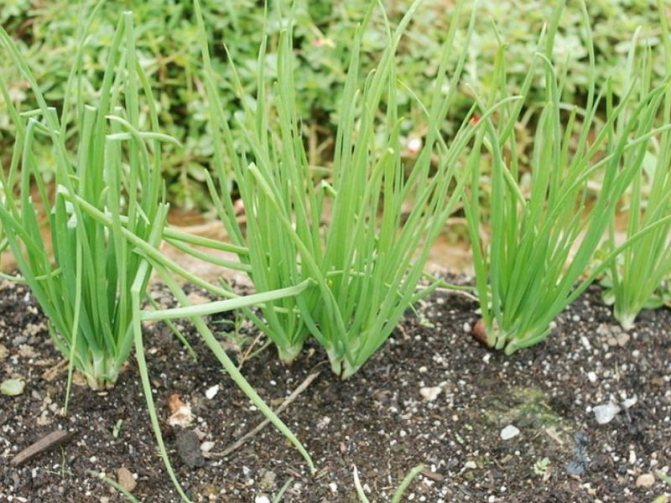

Growing onions in the photo
Watering should be stopped 2-3 weeks before the expected harvesting date, the bulbs should ripen well. A sign of onion readiness for harvesting is massive leaf lodging. Harvested in dry weather.
Traditional varieties of onions for a turnip are those with large, flattened or globular bulbs that can be stored throughout the winter. The color of the scales varies from almost white to bright red; the taste of the onion ranges from mild to pungent. Most varieties are planted in the spring, but there are varieties that are planted in the fall and harvested at the end of July of the following year. In the south, with mild winters, Japanese varieties are the most reliable when planted before winter, but they are unsuitable for long-term storage.
Remember!
Onions grown on feathers are not treated with any pesticides.
Leaves are not cut from onions planted to obtain a turnip.
A good harvest of onions can be obtained only in a sunny place, free from the roots of perennial plants (trees and shrubs).
Seed-grown onions keep better. Onions with yellow and dark red skins are especially well kept.
From seedlings stored at temperatures from + 1 ° C to + 18 ° C (constantly or periodically), the plants quickly go to the arrow.
conclusions
Perennial onions include different types: batun, shallots, multi-tiered, chives and others. They are used not only for food. Peduncles of some perennials are very beautiful and are used to decorate flower beds, flower beds. Plant care is not difficult. You just need to plant on time, regularly cut the green mass and, if possible, fertilize. But not with fresh manure. Perennial onions are propagated by seeds, vegetatively, and sevkom. But when buying seed, you need to make sure that it is last year. Since the germination rate becomes lower with each year of storage. Planting onion sets in autumn - the rules can be found here.
Choose according to your taste
Having familiarized yourself with the main types and varieties of onion, you should figure out how to choose it. When choosing a vegetable for planting, pay attention to:
- The size. The seed diameter should be about 10 mm. The Strigunovsky onion, which is often planted by domestic gardeners, has the ideal size.
- Surface. All planting bulbs should have a perfectly flat, yellowish surface with no signs of rotting. For planting, you can choose the golden onion Semko, as it rarely rots.
Propagation using seeds
As a rule, summer residents place the seed in open ground at the end of winter or early spring. The first shoots from seeds appear above the soil two weeks after planting.Over the next months, onions develop slowly, requiring constant attention. In order not to spend a lot of time growing, experienced gardeners use the seedling method.
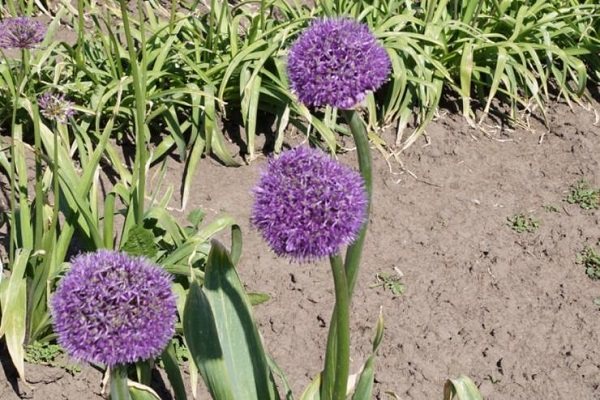

In March, the seeds are placed in prepared boxes with soil. To provoke early emergence of seedlings, planting material is soaked in a solution of potassium permanganate. There he must spend at least a day. The seeds then dry out.
The seedlings should grow under optimal conditions. Before the emergence of seedlings, the temperature is in the range from 20 to 22 ° C. If sprouts appear, they can withstand a temperature regime of 18–20 ° С. In open ground, seedlings are planted in mid-May.
Slime
It is also called a drooping onion. The slime rises immediately after the snow melts. At the beginning of April, the greens are already suitable for human consumption.
Slime is considered one of the earliest types and the leader in the amount of iron. The onion has a rich, mild flavor that does not change throughout the season.
Slime grows as a short bush. Its leaves are juicy, pale green in color. After cutting, they quickly recover. Blossoms with lilac large single balls.
Compared to other perennial onions, the yield of the slime is not very high. The average life cycle is 4 years. Upon completion, the plant is transplanted and well fed.
Reproduction is carried out by seeds.
Among the main varieties, Vitaminnaya Polyana, Leader, and Health Treasure are especially popular.
Slime is often grown for decorative purposes. It is planted on alpine hills, in flower beds.
Reviews of gardeners
Alenka, Odintsovsky district
They do not cause much trouble, well, except that a batun in a "bad summer" can pick up peronosporosis, I did not notice it for the rest. At the first sign, I cut off the greens, I do not process anything.
Owl, Leningrad region
Flowers should be cut off from the batun to prevent its depletion. I leave one flower for seeds.

